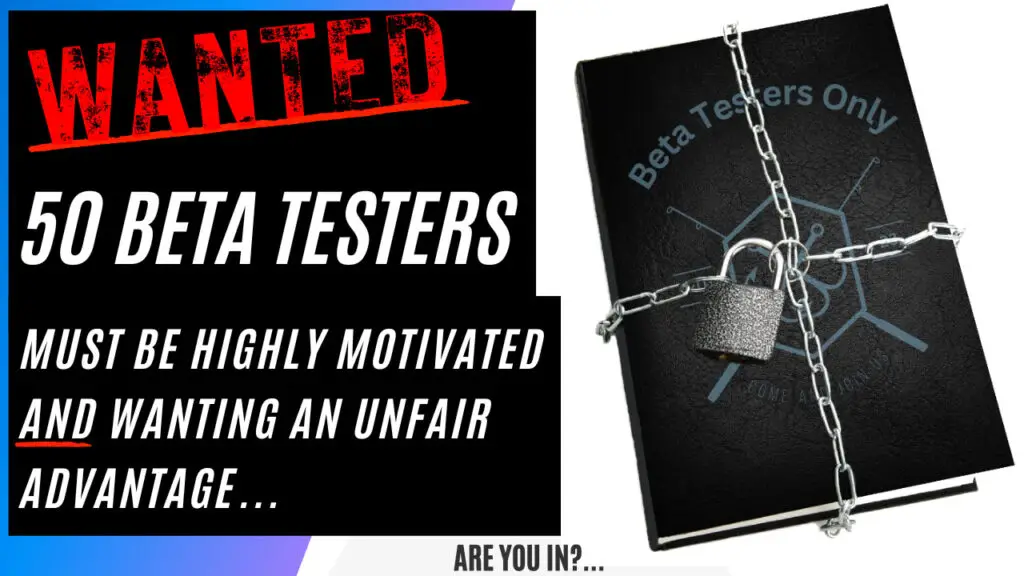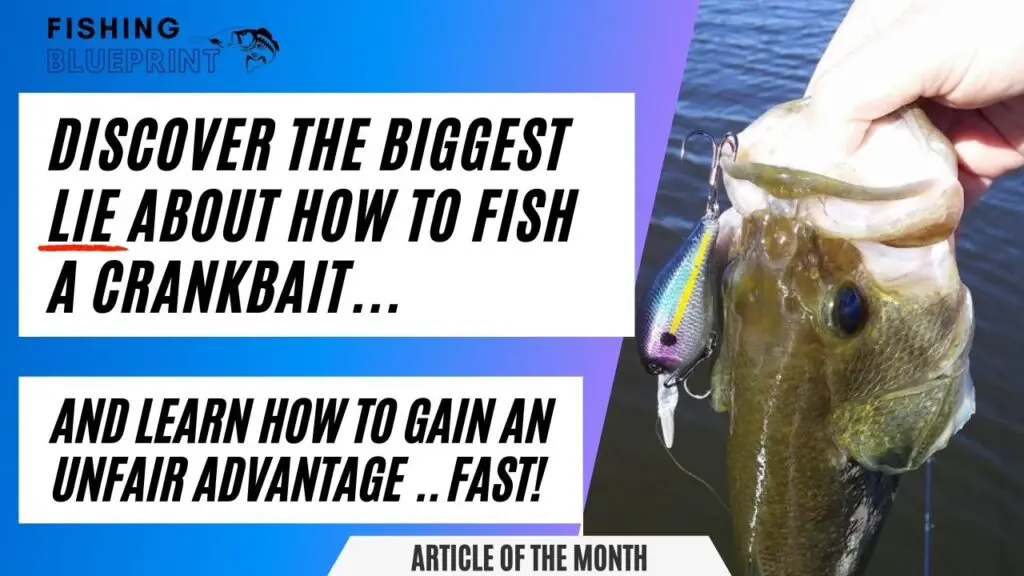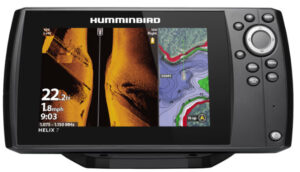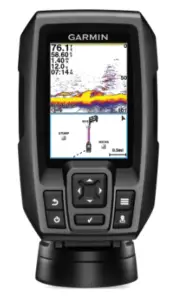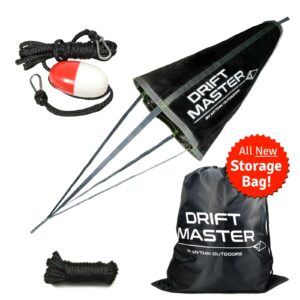How To Fish Lake Hartwell | Your Lake Hartwell Fishing Report
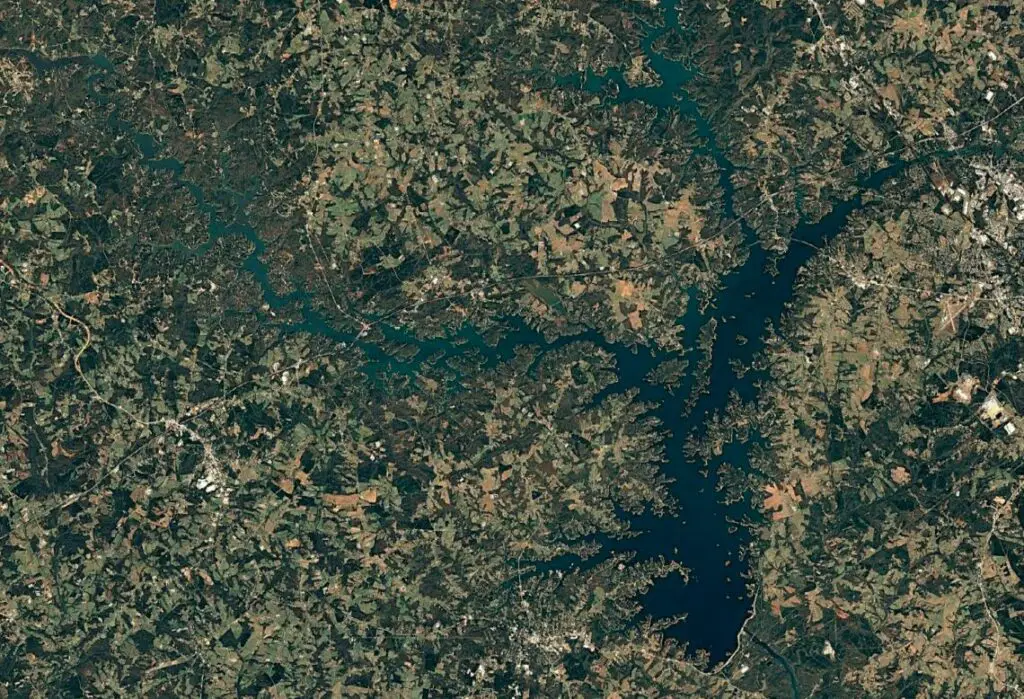
Hartwell Lake is a large lake that sits 112 miles away from Atlanta and 238 miles away from Savannah. However, the largest town it’s near is Anderson.
Overall, it’s a popular lake, and sometimes fishing Hartwell Lake can be absolutely amazing. However, knowing how to fish Hartwell Lake can be very difficult. But luckily for you, in this post you’re going to be given the blueprint to fish this lake.
So what are the best tips for fishing Hartwell Lake? There are three important factors you must know if you want to know how to fish Hartwell Lake successfully. First, you need to know what kind of fish is in Hartwell Lake. Second, it’s important for you to know which part of the lake each species can be found. Lastly, knowing what are the best baits for Hartwell Lake is vital. However, tactics, lures, and locations will be different for each type of fish that you target. So let’s talk about the steps you need to take in order to give you the best chance of catching a fish on Hartwell Lake.
Key Takeaways
Here’s the most recent and updated Trinity Lake Fishing Report – it gives you a quick and easy list of some really good fishing spots. If you’re looking for more detail on how to fish each spot scroll down into the article.
- Hartwell Dam
- Mid-Lake Seneca River – Summer & Winter Pattern
- Mid-Lake Seneca River – Spring & Fall Pattern
- Coneross Creek
- BONUS – Offshore Brush Piles near Marinas
Here are some additional fast and helpful tips just for you:
- The easiest way to fish this lake is by boat, but there are TON of areas to fish from the bank, or by kayak or float tube.
- There are a lot of public boat ramps to use, especially on the Georgia side of the lake.
- Camping and RV parking is available.
- You can buy tackle and groceries at the lake or at one of the tackle shops listed in this article below.
About Lake Hartwell
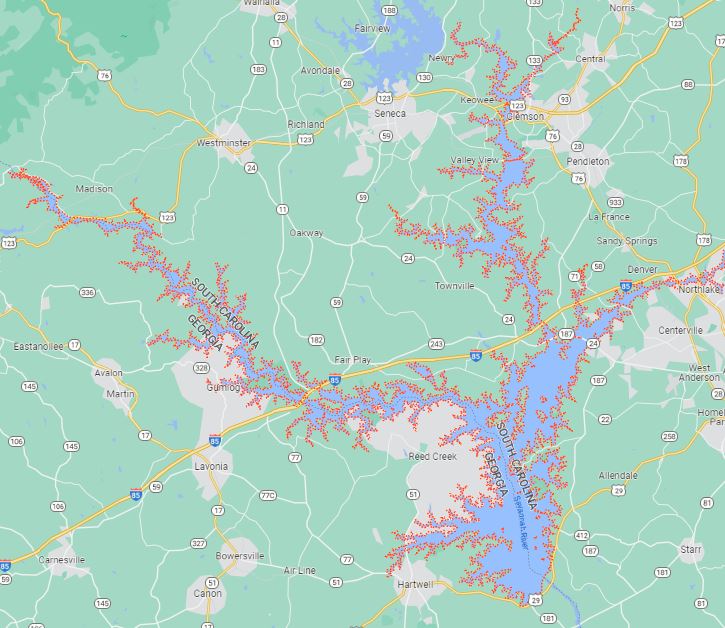
The U.S. Army Corps of Engineers maintains Lake Hartwell as one of the three giant reservoirs on the Savannah River. It was originally created for hydropower, flood control, and navigation.
Georgia and South Carolina are divided by Lake Hartwell. If you’re motoring in the direction of the dam, the South Carolina side will be on your left and the Georgia side will be on your right.
Lake Hartwell is a deep body of water with an average depth of 45 feet and a maximum depth of 185 feet when the lake is completely full.
Furthermore, it’s about 94 miles long. Needless to say, Lake Hartwell fishing can go gangbusters when you have 56,000 acres and 962 miles of shoreline to fish!
**IMPORTANT – Your fishing license is reciprocal when you fish this lake. So you may be asking, what the heck does that mean?
Here is what it means… This shows (for this lake) that if you have a Georgia license, you may use it in the South Carolina side of the lake. Likewise, if you have a South Carolina fishing license, you may use it in Georgia side of the lake. – Does that make a little more sense? Cool.
What Kind Of Fish Are In Lake Hartwell
- Largemouth Bass
- Spotted Bass
- White Bass
- Striped Bass
- Hybrid Striped Bass
- Channel Catfish
- Flathead Catfish
- Blue Catfish
- White Crappie
- Black Crappie
- Bluegill
- Redbreast Sunfish
- Redear Sunfish
- Common Carp
- Longnose Gar
- Walleye
Lake Hartwell Fishing Tips & General Strategies
It can be a challenge to break down this body of water… So that’s why I created this Lake Hartwell Fishing Report to help you start catching fish fast!
Getting started, Lake Hartwell fishing can be tough… the water is clear-to-slightly stained and it can get pretty windy…
It is highly recommended that you target a specific species of fishing Lake Hartwell that will give you the best chances of success.
Anglers fishing from a boat will have a greater likelihood of success than those fishing from the land or from something else like a boat dock.
There are many different kinds of fish in Lake Hartwell, but the primary game fish are largemouth bass, striped bass, crappie, catfish, panfish, and even some healthy walleye!
There are two general classifications of structure where you can expect to catch bass in Lake Hartwell and they are near the shoreline and offshore.
My personal Top 5 shoreline structures to catch as bass are:
Offshore structures include:
Weed beds are prevalent throughout Lake Hartwell and can be fished year round. The key to fishing weed beds is to find weed beds that are either near a ledge, near a channel swing.
Furthermore, you can also be successful if you find a hard structure (like a rock pile, rocky ridge, or a high spot) within the weed bed flat.
Overall the best time to fish for bass in this lake is April, May, and June.
The most productive weed beds on the western side of the lake are 5-10-feet deep.
There are also several feeder creeks located throughout the lake. These areas are notorious for growing thick with weeds and submerged vegetation. This gives Largemouth bass anglers a prime location to target those fish.
High winds and breezy conditions are very common when fishing Lake Hartwell.
Most of the fish such as bass, bluegill, crappie, and catfish will spawn in the spring. Bass will spawn in 1’-15’-feet of water notably on rocky structure, gravel flats, humps, and small creek inlets and cuts.
When the summer heat sets in, the bass, bluegill, and crappie will move to deeper water to approximately 15’-30’-feet of water.
Focus on drops offs, channels, points, submerged humps. Deeper areas with chunk rock ranging from baseball to basketball size will attract predatory fish like bass, crappie and catfish because it provides a safe area the prey (crayfish, bream, and minnows) can hide.
If you can find the ideal spot at the ideal depth then it will most likely assist you in catching fish.
But Where Are The Best Places To Fish At Lake Hartwell?
And in no particular order here is that list of the best fishing spots at Lake Hartwell.
DISCLAIMER: The material provided is for general information purposes only. It’s important to understand that any information provided in this article can change at any time. Any maps or graphics featured are not to be used as navigational aids. Fishing Blueprint will not be responsible for any personal injury or property damage from any misuse of the maps or graphics provided. It’s completely impossible to give you every single spot where you can potentially catch a fish. But, what this list does do is to give you a helping hand and narrow down to the most productive fishing spots.
Hartwell Dam
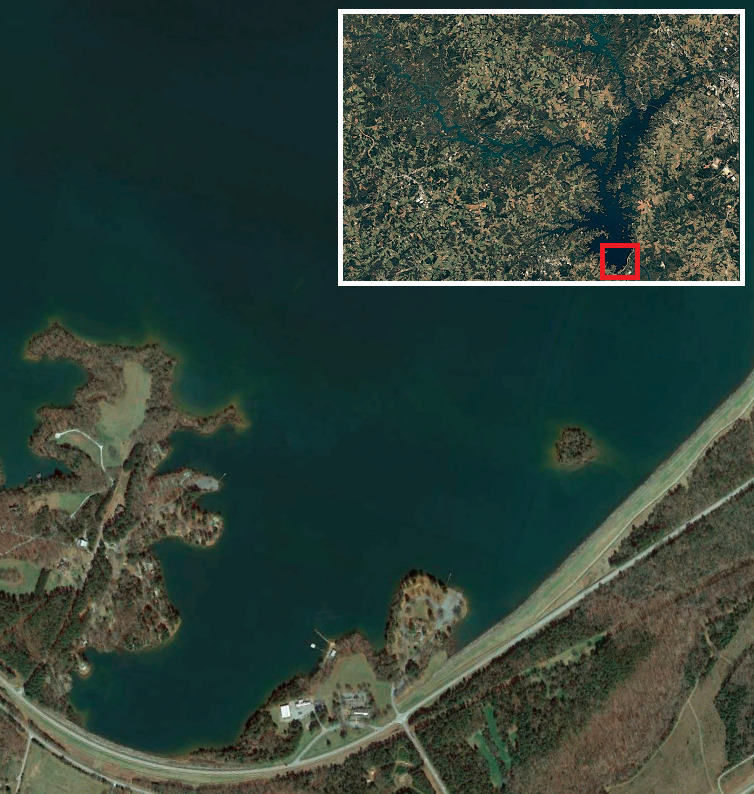
Look carefully at this spot using a topographic map…

This is what this spot looks like during low water level…
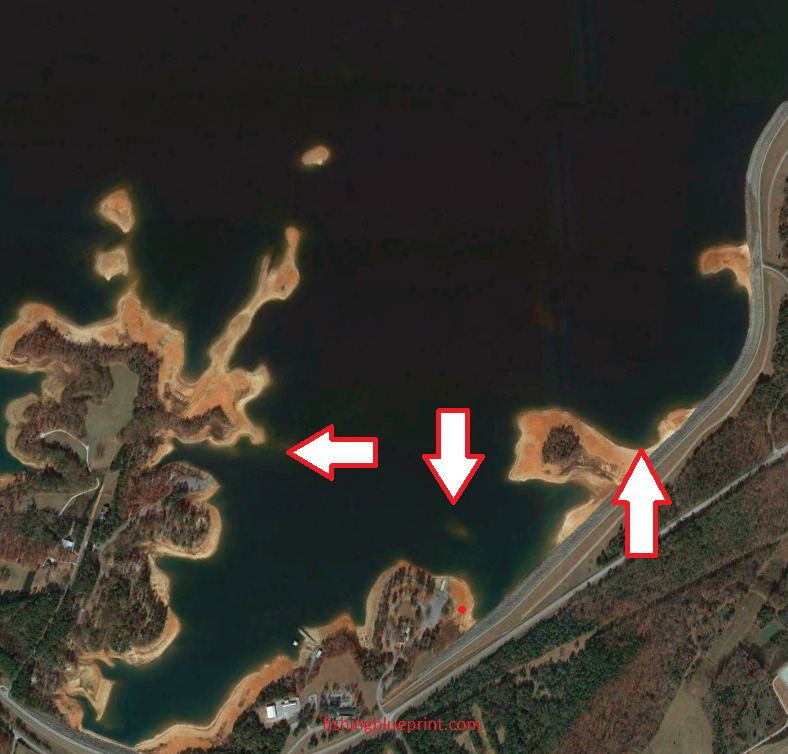
Studying the topographic map you’ll see steep ledges, off shore humps, long points that drop into deep water..
Additionally, you can see the shelf on the point, and an off shore hump in the middle of this cove. Lastly, you’ll see steep cuts where bass love to coral shad.
All of these spots will attract fish. But why?
If you analyze the sonar, these structures are hard and consist of patches of chunk rock and bed rock.
The banks can range from moderate to relatively steep and can range from large boulders, to chunk rock, to pea-sized substrate.
Again, carefully, scan this area with your sonar and fish efficiently.
Side scanning this area for active fish such as all species of bass, crappie, and walleye should be a priority if you plan to fish this section of the lake.
Surprisingly, this area remains relatively quiet for recreational fishing traffic, due to the fact that most other anglers will either focus on one of the north arms of the lake.
Effective baits for bass this area include: topwater lures, flutter spoons, buzzbaits, crankbaits, soft plastic swimbaits, spinnerbaits, chatterbaits, jerkbaits, swim jigs, hair jigs, and underspin jigs when the bass are aggressive.
If the bass are timid, then drop shot, tubes, Ned rig, Neko rig, Mojo rig, Carolina rig, and football jigs all work really well.
Located: lower-lake
Structural features: Steep rocky banks, offshore humps, drop offs, and ledges
Best species to target: Bass, crappie
Most effective way to fish this spot: Boat, kayak, shoreline
Mild-Lake Seneca River - Summer & Winter Pattern
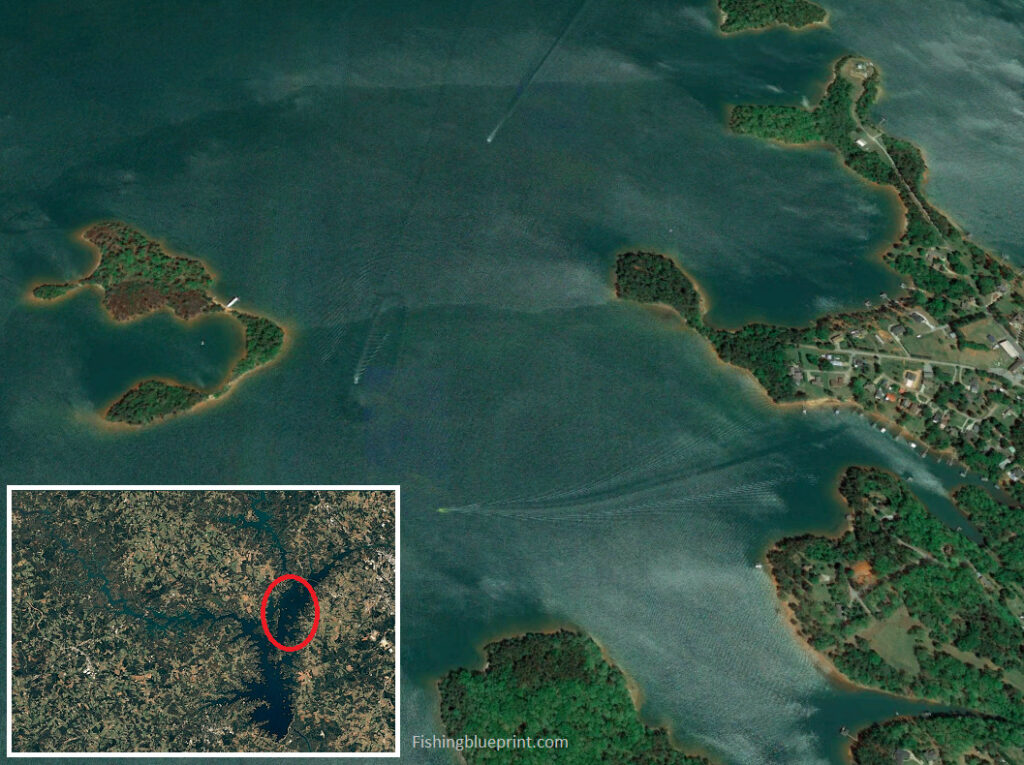
Look carefully at this spot using a topographic map…
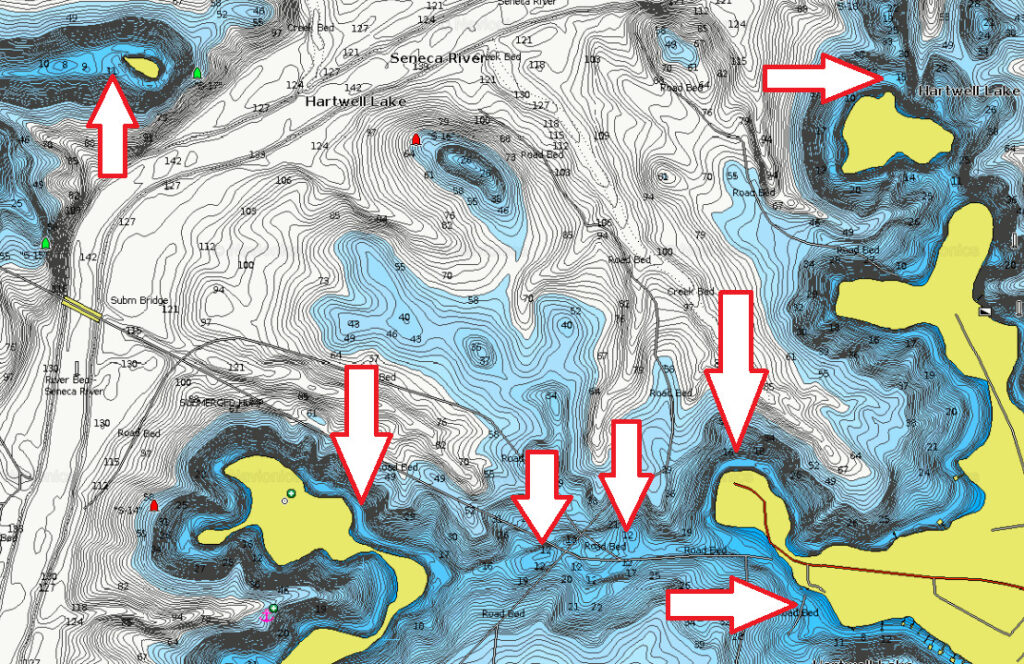
This is what this spot looks like during low water level…
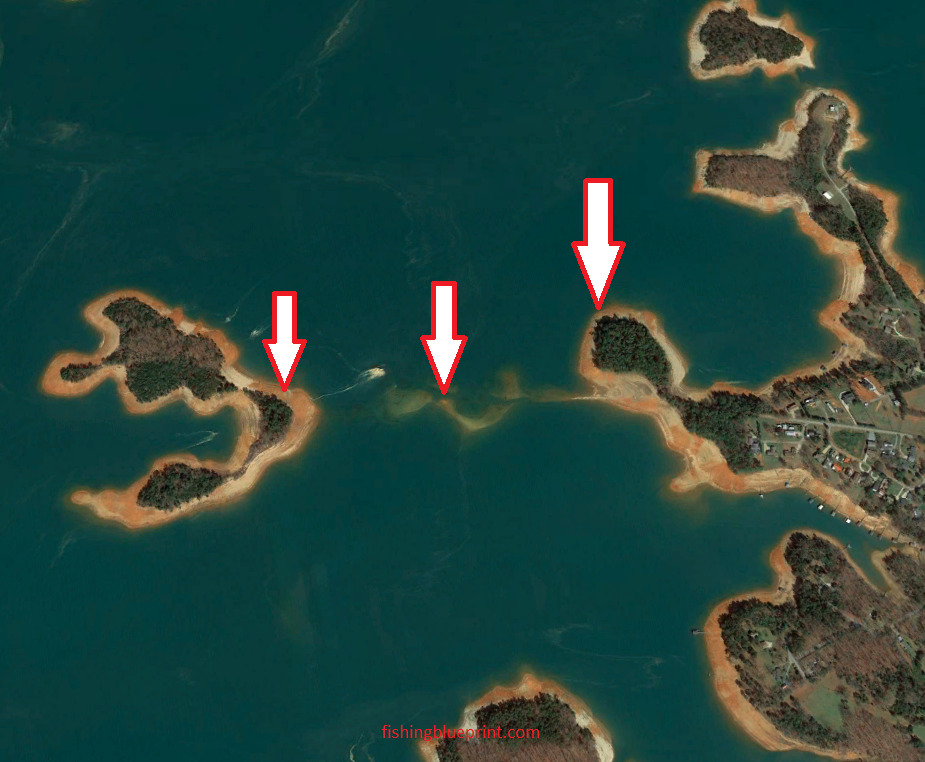
The Seneca River is exceptionally unique because it has a ton of offshore ledges, humps and submerged Road beds. In the summer Anglers can do very well fishing these structures.
By looking at the satellite photo, the islands don’t seem very unique, however if you study the topographic map you’ll notice when the lake is at full pool is a ledge that is approximately 9 ft deep that attracts bass like no other. Now when you combine that with other structures nearby such as submerged Road beds and humps this area can go off all through spring and during the summertime.
In fact, that’s exactly how Stetson Blaylock fished this area during the 2022 Bassmaster Classic.
Side scanning this area for active fish such as all species of bass, crappie, and walleye should be a priority if you plan to fish this section of the lake.
Not surprisingly, this area can get super busy with recreational traffic so just be prepared for that, and this place can get extremely windy so make sure you wear your PFD at all times even if you are close to the bank.
Effective baits for bass this area include: topwater lures, flutter spoons, buzzbaits, crankbaits, soft plastic swimbaits, spinnerbaits, chatterbaits, jerkbaits, swim jigs, hair jigs, and underspin jigs when the bass are aggressive.
Flutter spoons work great by “hopping” the spoon from one ledge and letting it fall to the next one down underneath it. How high you hop the spoon off the ledge will depend on how aggressive the bass are. The more aggressive = higher the hop versus less aggressive bass will only need a small hop off the ledge.
If the bass are timid, then drop shot, tubes, Ned rig, Neko rig, Mojo rig, Carolina rig, and football jigs all work really well.
Located: lower-lake
Structural features: Steep rocky banks, offshore humps, drop offs, and ledges
Best species to target: Bass, crappie
Most effective way to fish this spot: Boat, kayak, shoreline
Mild-Lake Seneca River - Spring & Fall Pattern
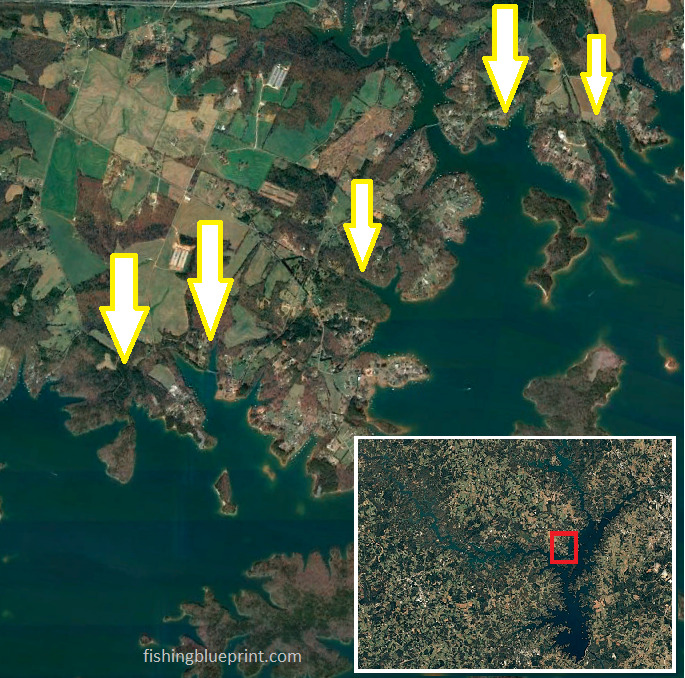
Look carefully, take a look at this topographic map of this area…
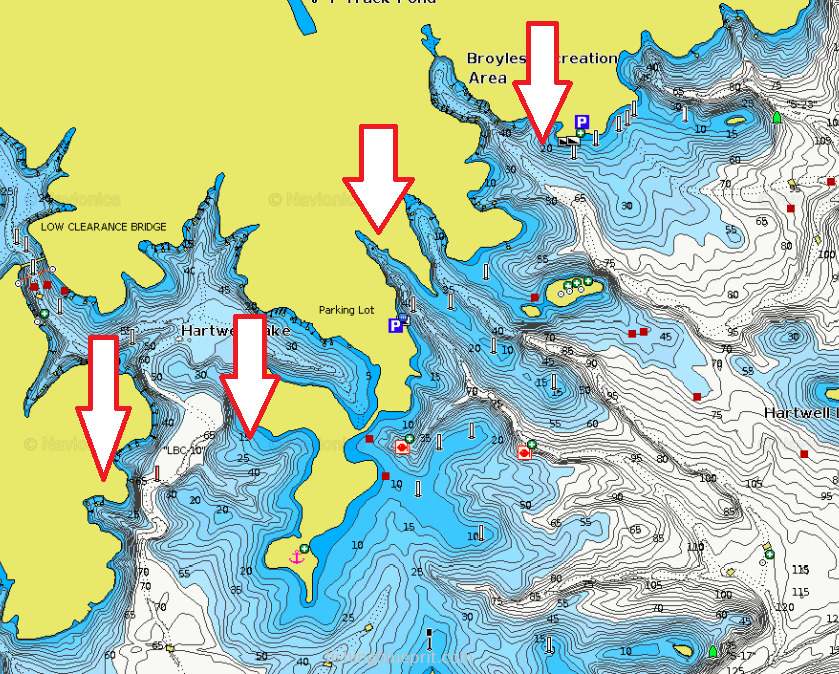
The shoreline area of the midlake Seneca River section is a spring bass fishing mecca. What I highlighted above is just a small portion of the small cuts and coves that can house spawning bass and autumn bass chasing shad.
Normally it’s going to be the northern section of this Lake that is going to have the most spawning bass…
But, do not misunderstand me… the southern areas will have a ton of spawning bass, but you’ll have the best chances to catch a fish in the northern coves.
The water in this section of the lake is mostly clear to very slightly stained, however the wind is going to be your biggest adversary.
In case it’s windy…
I strongly suggest targeting long points with rocky ridges, humps and offshore artificial brush piles.
Effective baits for bass this area include: topwater lures, flutter spoons, buzzbaits, crankbaits, soft plastic swimbaits, spinnerbaits, chatterbaits, jerkbaits, swim jigs, hair jigs, and underspin jigs when the bass are aggressive.
Flutter spoons work great by “hopping” the spoon from one ledge and letting it fall to the next one down underneath it. How high you hop the spoon off the ledge will depend on how aggressive the bass are. The more aggressive = higher the hop versus less aggressive bass will only need a small hop off the ledge.
If the bass are timid, then drop shot, tubes, Ned rig, Neko rig, Mojo rig, Carolina rig, and football jigs all work really well.
Located: lower-lake
Structural features: Steep rocky banks, offshore humps, drop offs, and ledges
Best species to target: Bass, crappie
Most effective way to fish this spot: Boat, kayak, shoreline
Conerosss Creek
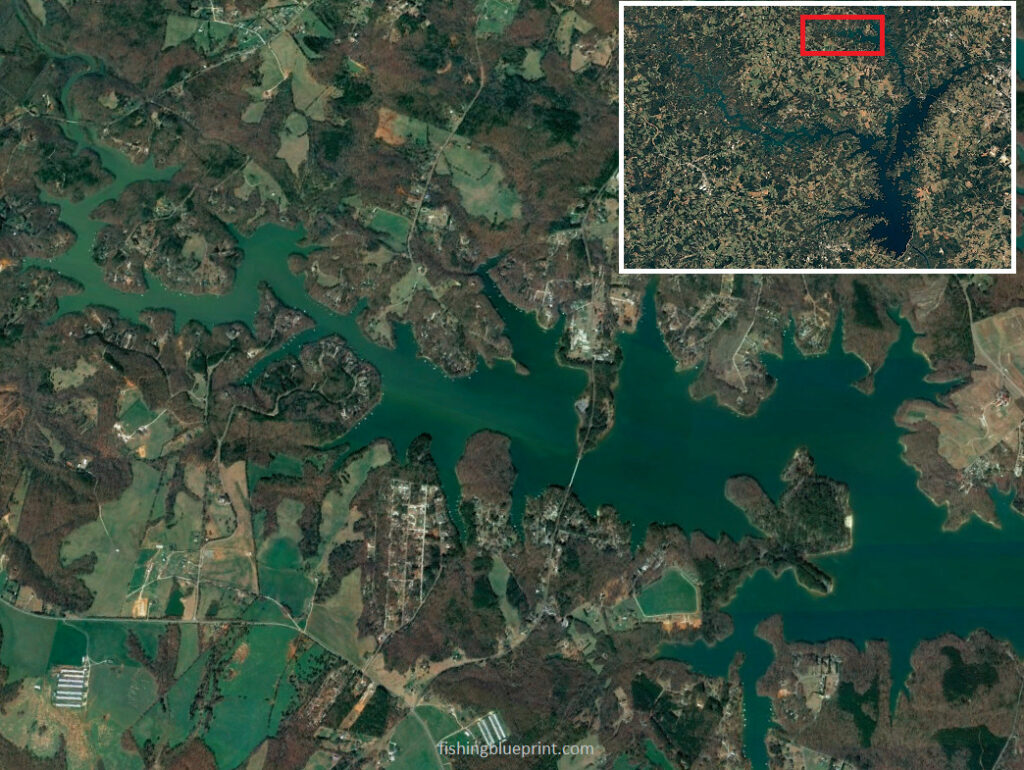
Coneross Creek on Lake Hartwell behaves like its own lake…
There are so many small winding bends, small cuts, large coves, and even what some would consider secondary arms, that make this area exceptionally unique.
It averages between 35 to 50 ft deep, however it can get as deep as 90 ft the closer you get to the main lake. Coneross Creek has options to fish shallow water, as well as offshore options.
For anglers who like to fish shallow, there are multiple smaller arms, cuts, and docks that are close to brush piles anglers frequently target, and hold fish all year long.
For the anglers who love to fish offshore structure, there are a ton of submerged humps, and ridges that are located near the steep bends of the creek channel
There are also multiple bridges, docks, boat ramps, and fishing piers that have been built by the state that should be investigated for bass.
Effective baits for bass this area include: topwater lures, flutter spoons, buzzbaits, crankbaits, soft plastic swimbaits, spinnerbaits, chatterbaits, jerkbaits, swim jigs, hair jigs, and underspin jigs when the bass are aggressive.
Flutter spoons work great by “hopping” the spoon from one ledge and letting it fall to the next one down underneath it. How high you hop the spoon off the ledge will depend on how aggressive the bass are. The more aggressive = higher the hop versus less aggressive bass will only need a small hop off the ledge.
If the bass are timid, then drop shot, tubes, Ned rig, Neko rig, Mojo rig, Carolina rig, and football jigs all work really well.
Located: upper-lake
Structural features: steep rocky banks, offshore humps, drop offs, ledges, docks, vegetation
Best species to target: Bass, crappie
Most effective way to fish this spot: Boat, kayak, shoreline
BONUS - Offshore Brush Piles near Marinas
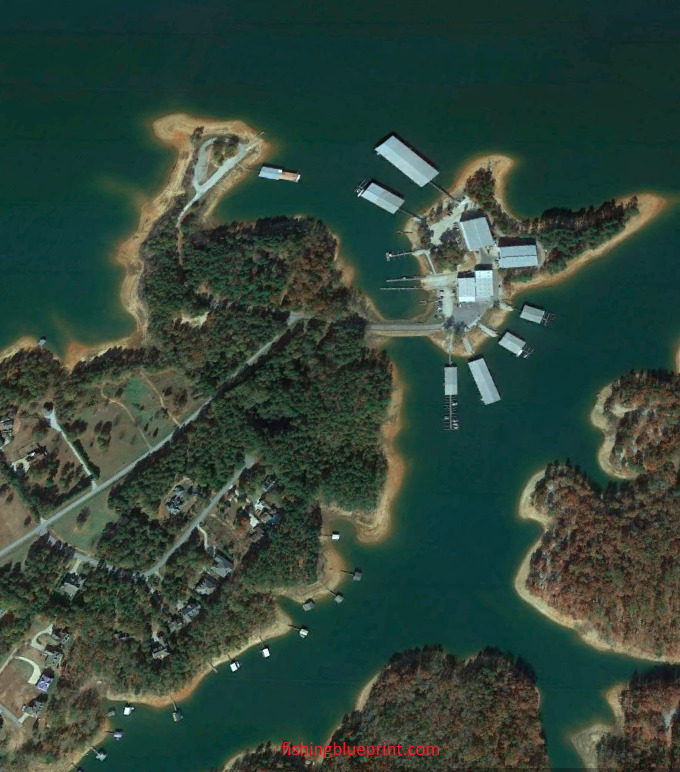
When I mention brush piles near marinas I know it can sound kind of vague, right?
Now hear me out…
Most of us know that brush piles are fish-holding structures that provide cover for baitfish and bream. Most of the time it’s a pile of wood or wood-like debris (like plastic pallets) tied together, and sunk with a cement block used as its anchor.
These brush piles are known to be strategic feeding spots for bass and crappie.
If you take an angler who has a boat and frequently fishes the lake, or lives on the lake, but doesn’t want to go far to catch a fish, however want to give themselves the best chance to catch a fish, what do you think they’re going to do?
They’re going to put the odds in their favor and drop a few brush piles to attract those fish. Are you getting this? Is this making sense?
It gets even better…
Now, when you have a marina you have an area where many boaters also may have the same goal of catching a fish fast without traveling too far…
So now you have an location that has a bunch of fishermen launching from one area and those guys will plant brush piles all over the place… Sometimes my fish finder image looks like a Christmas tree because there’s so many stinking brush piles!
It’s been my experience that one of the best places to find a brush pile is around marinas.
So, as an angler who is new to the lake, if you have confidence in fishing brush piles, and you want to try to find brush piles, it’s easy to rule out the majority of the lake by targeting the marinas. Now you can quickly find submerged brush piles and other artificial structures that could attract fish.
This can be confusing for a lot of anglers, but I’m here to help…
I completed a full beginners guide to fishing offshore brush piles…
One thing is certain: not all brush piles are made the same.
The key to bass fishing brush piles are: (1) looking for certain sorts of brush piles that have a greater likelihood to hold fish; (2) knowing when to fish brush piles throughout the year; and (3) understanding what baits work best.
If you want to learn more I wrote a full report how to fish brush piles from A-to-Z.
>>> Learn More: Bass Fishing BRUSH PILES To Catch The Most Bass In Minimum Time! — Click HERE!
Before trying to fish everything, be sure to take some time and scan these areas first with your fish finder to see if there are any bait or bass relating to that particular spot. If you see bait or bass in the spot then fish it.
Effective baits for this area include: crankbaits, soft plastic swimbaits, spinnerbaits, jerkbaits, chatterbaits, swim jigs, hair jigs, and underspin jigs when the bass are aggressive.
If the bass are timid, then weedless drop shot, football jigs, Texas rig, Ned rig, Neko rig, Mojo rig, Carolina rig, and tubes all work really well.
Located: multiple locations
Best species to target: Bass, crappie
Most effective way to fish this spot: Boat, kayak
Public Fishing Areas & Boat Ramps
Luckily there are plenty options for shore fishing this lake and even where to drop your boat.
Here is a list of where the general public can fish from the shore, and drop your boat into the lake:
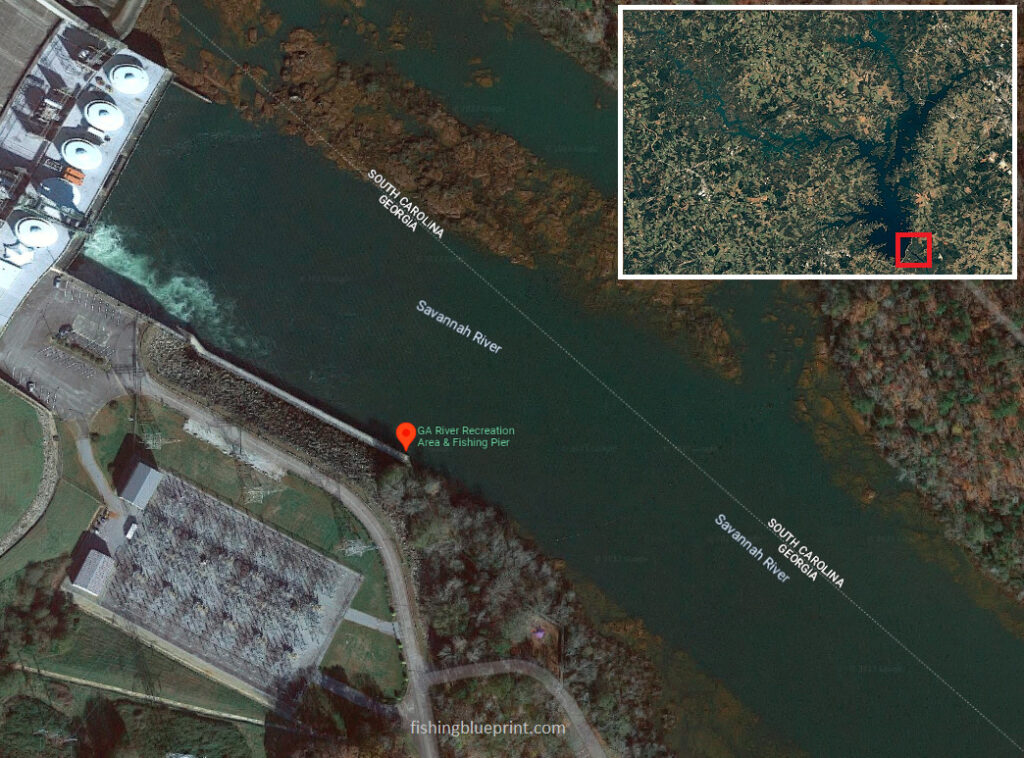
Hartwell Dam Tailwater
Phone number: (770) 535-5497
Boat Ramp: Yes
Amenities: Dock (ADA), Restroom (ADA), Parking, Picnic Area, Bank Fishing, Pier Fishing
Google directions link
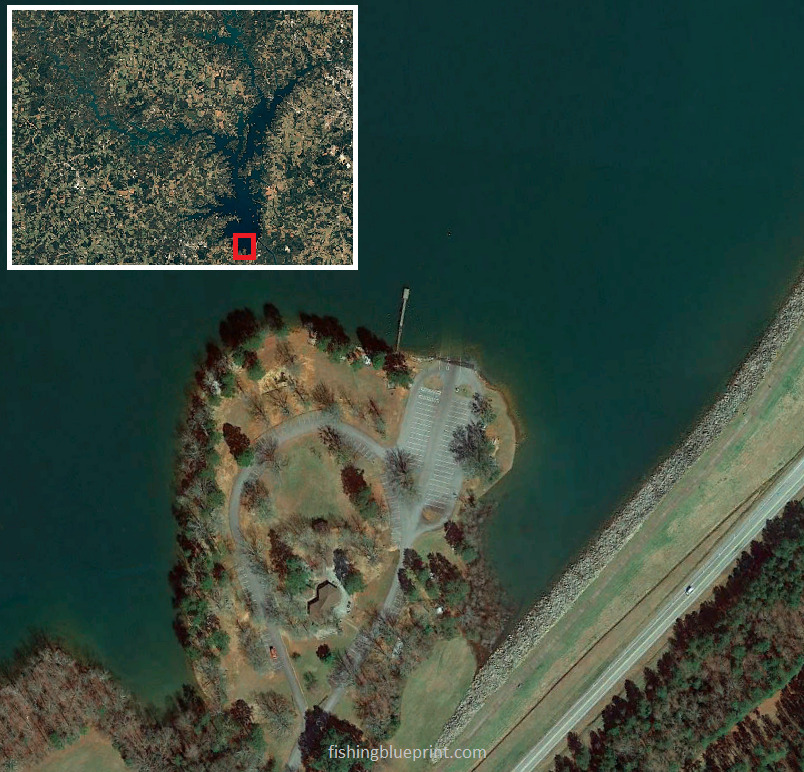
Big Oaks Recreation Area
Phone number: (706) 856-0300
Boat Ramp: Yes
Amenities: Dock (ADA), Restroom, Parking, Picnic Area, Bank Fishing
Google directions link
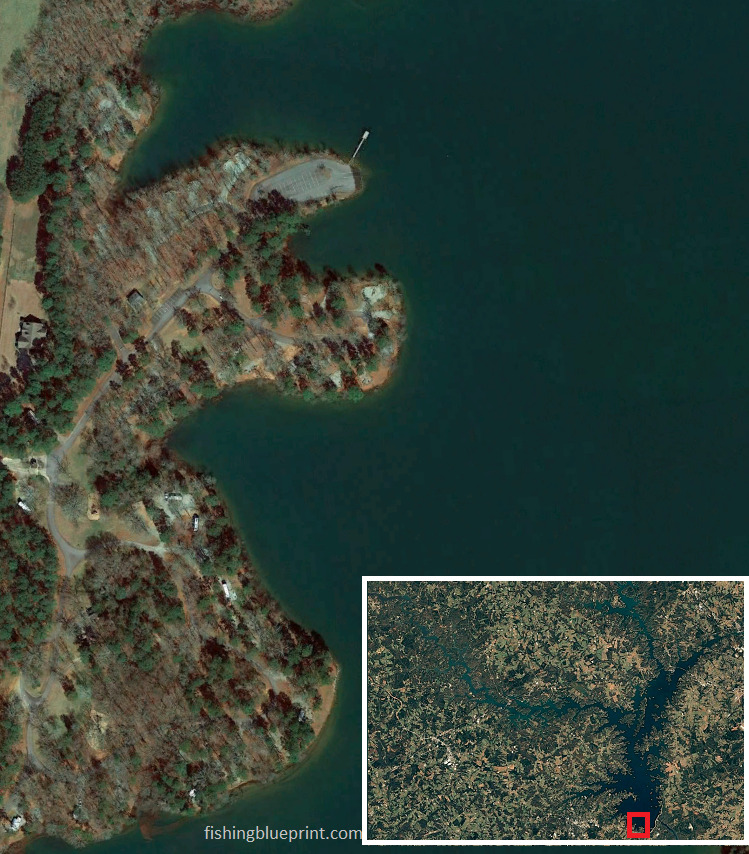
Watsadler Campground
Phone number: (706) 856-0300
Boat Ramp: Yes
Amenities: Dock, Parking, Bank Fishing
Google directions link
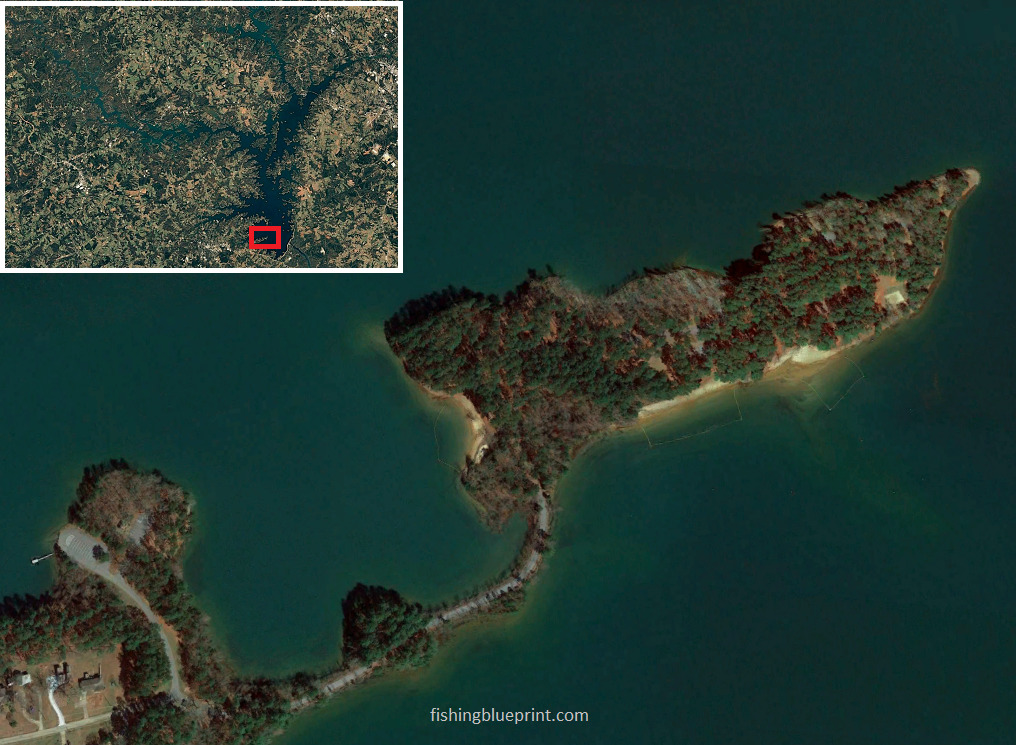
Elrod Ferry
Phone number: (706) 856-0300
Boat Ramp: Yes
Amenities: Dock, Parking, Picnic Area
Google directions link
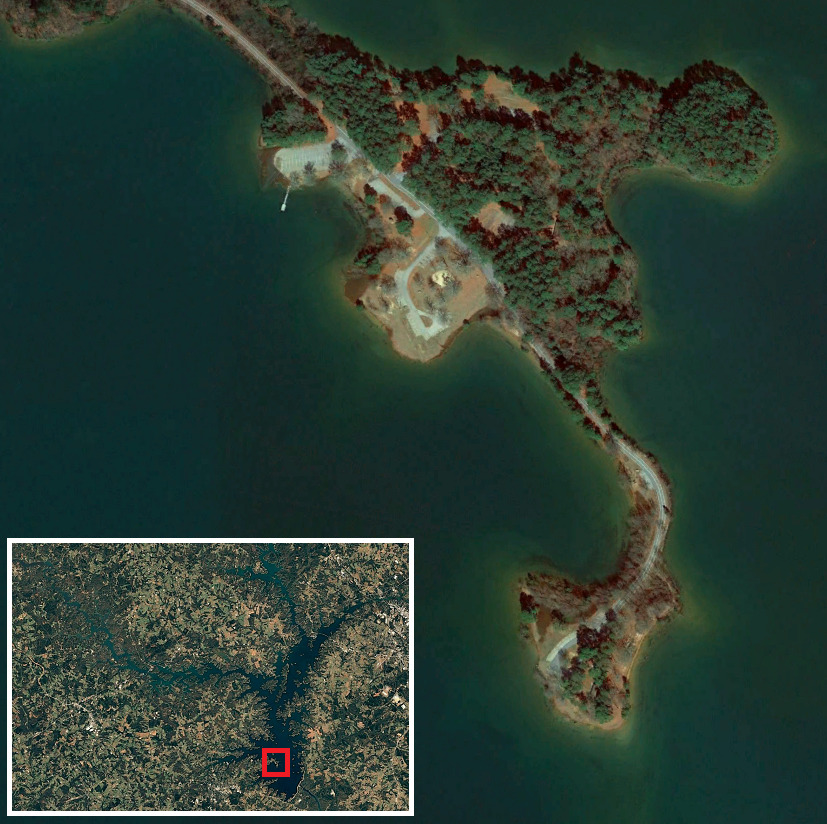
Long Point Recreation Area
Phone number: (706) 856-0300
Boat Ramp: Yes
Amenities: Dock (ADA), Parking, Picnic Area, Bank Fishing
Google directions link
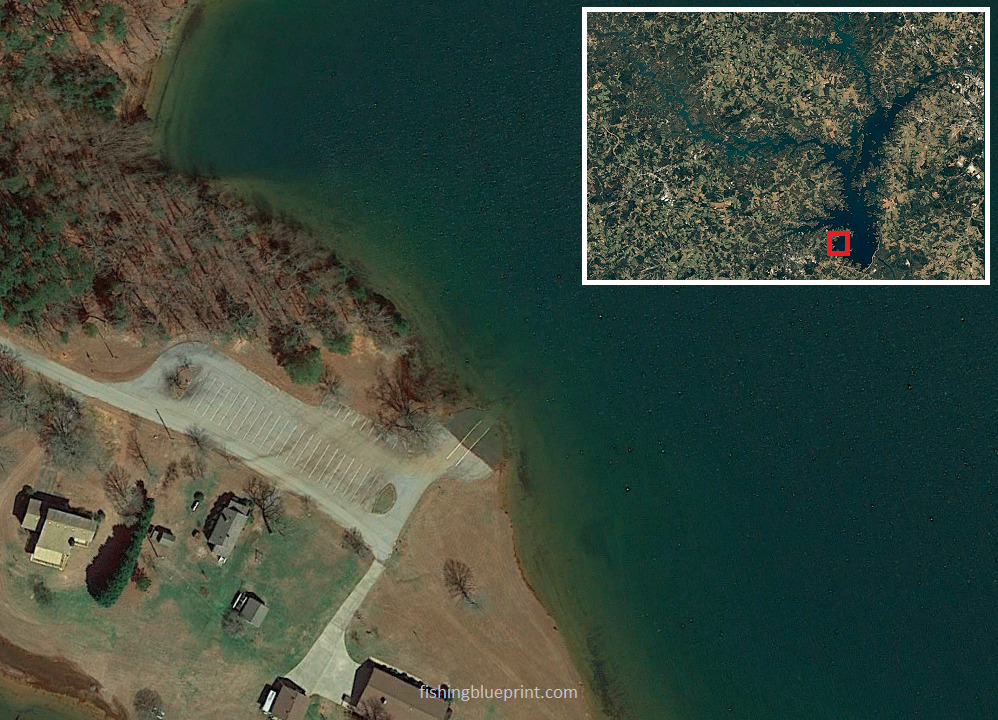
Duncan Branch
Phone number: (706) 856-0300
Boat Ramp: Yes
Amenities: Parking, Bank Fishing
Google directions link
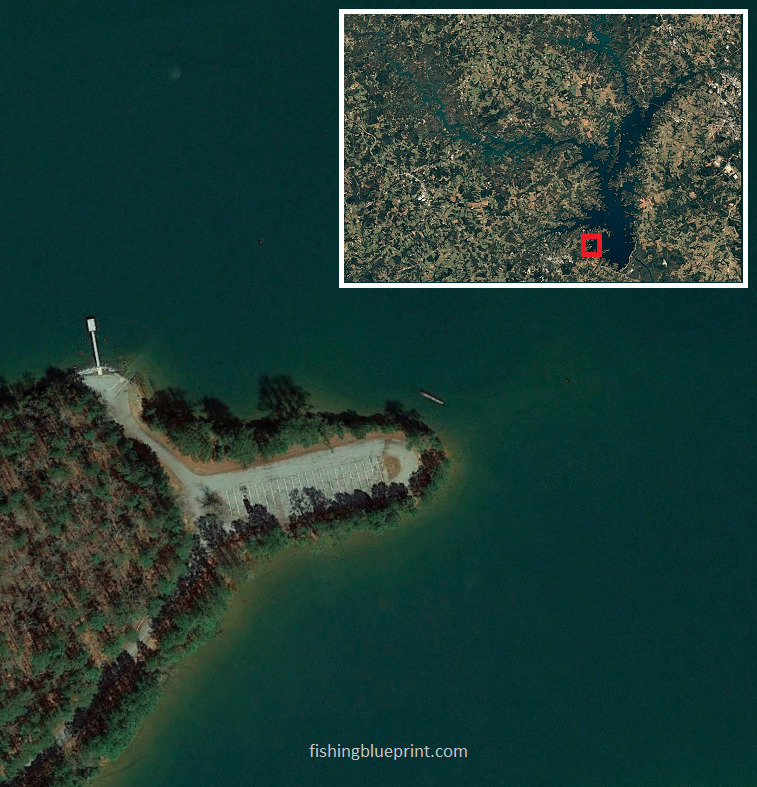
Powderbag Creek
Phone number: (706) 856-0300
Boat Ramp: Yes
Amenities: Parking, Bank Fishing
Google directions link
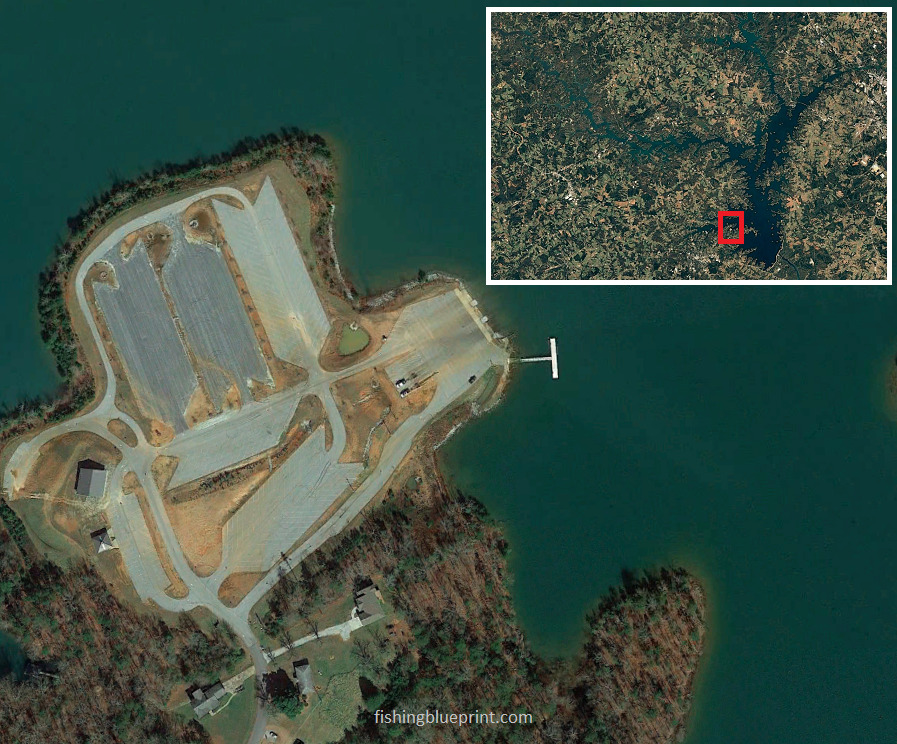
Gum Branch
Phone number: (706) 856-0300
Boat Ramp: Yes
Amenities: Dock (ADA), Restroom (ADA), Parking (ADA), Bank Fishing
Google directions link
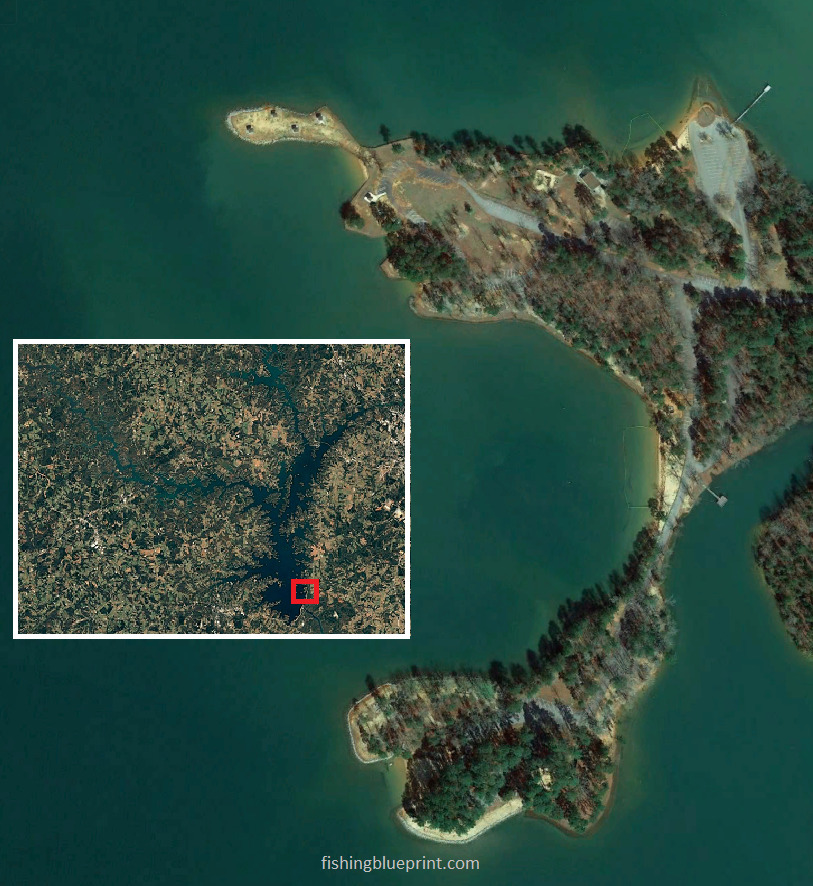
Singing Pines Recreation Area and Boat Ramp
State: South Carolina
Phone number: (888) 893-0678
Boat Ramp: Yes
Amenities: Dock (ADA), Restroom (ADA), Parking (ADA), Bank Fishing
Google directions link
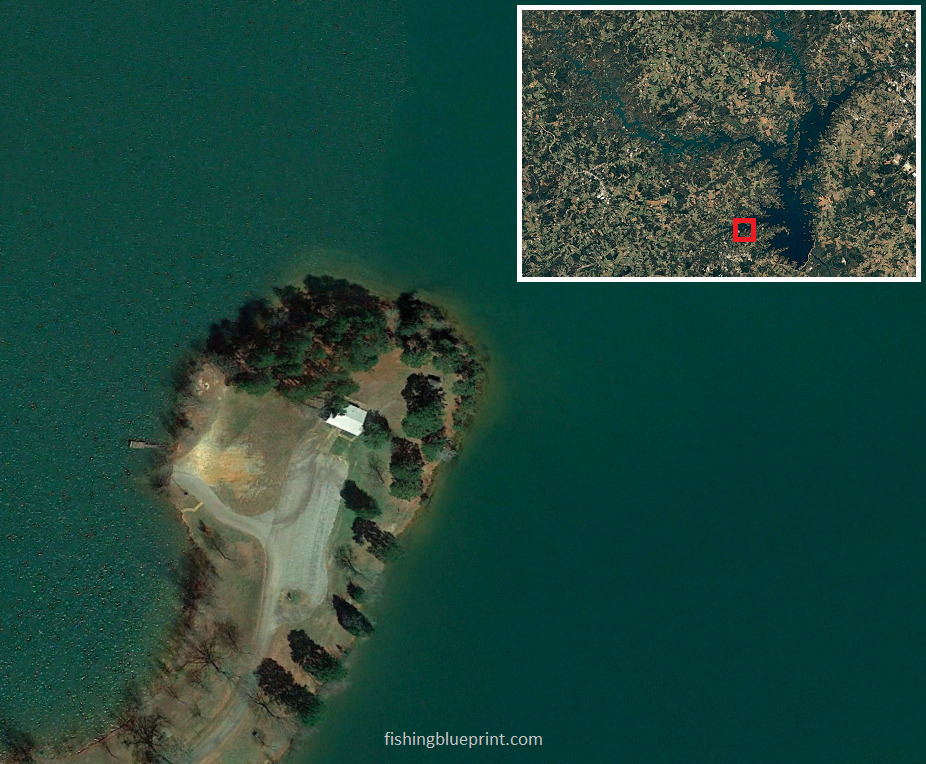
Hart Lakeside Part Day Use/Campground
Phone number: (706) 856-0300
Boat Ramp: Yes
Amenities: Restroom, Parking, Picnic Area, Bank Fishing
Google directions link
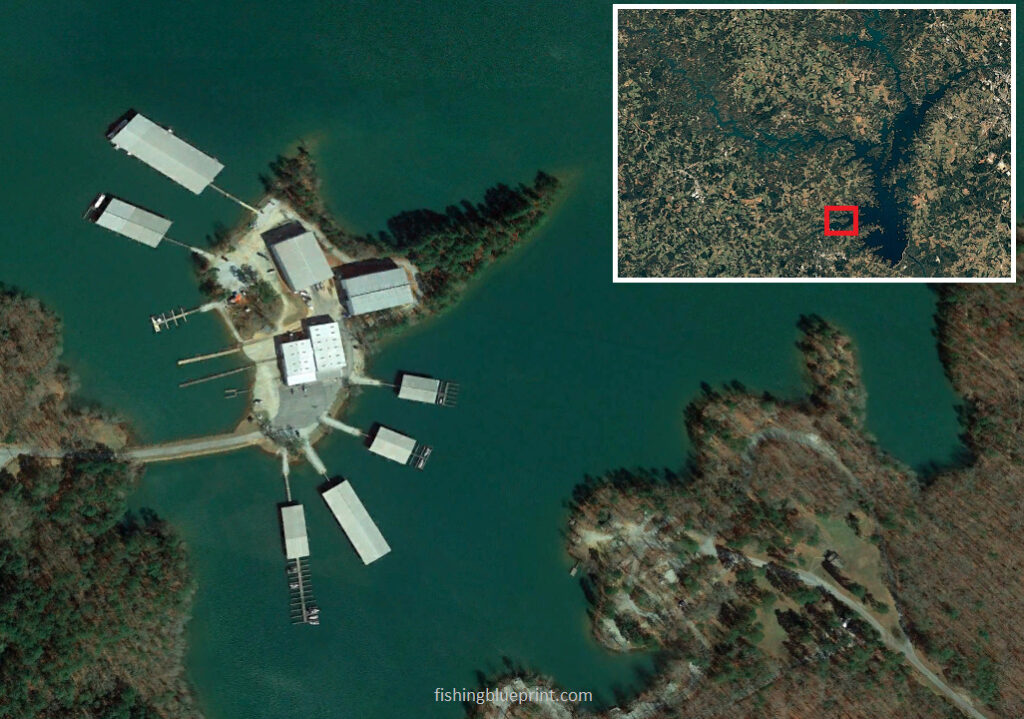
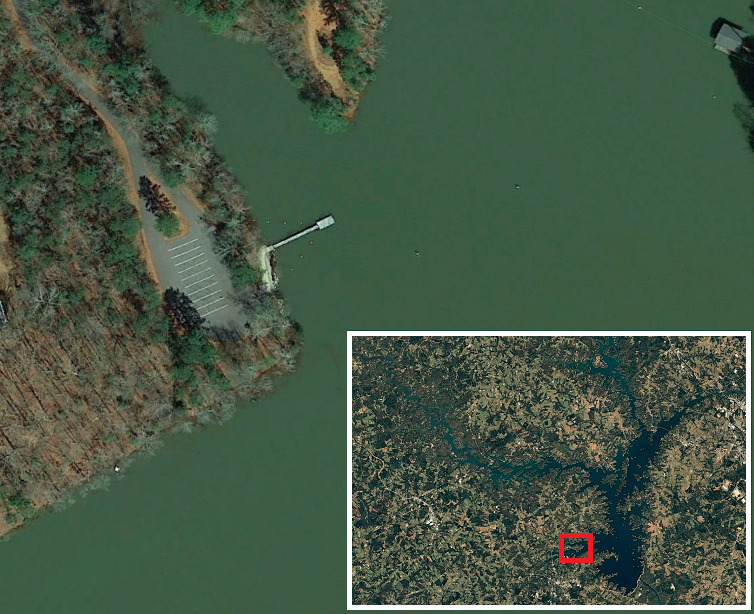
Cleveland Access Boat Ramp
Phone number: (706) 856-0300
Boat Ramp: Yes
Amenities: Dock, Restroom, Parking, Bank Fishing
Google directions link
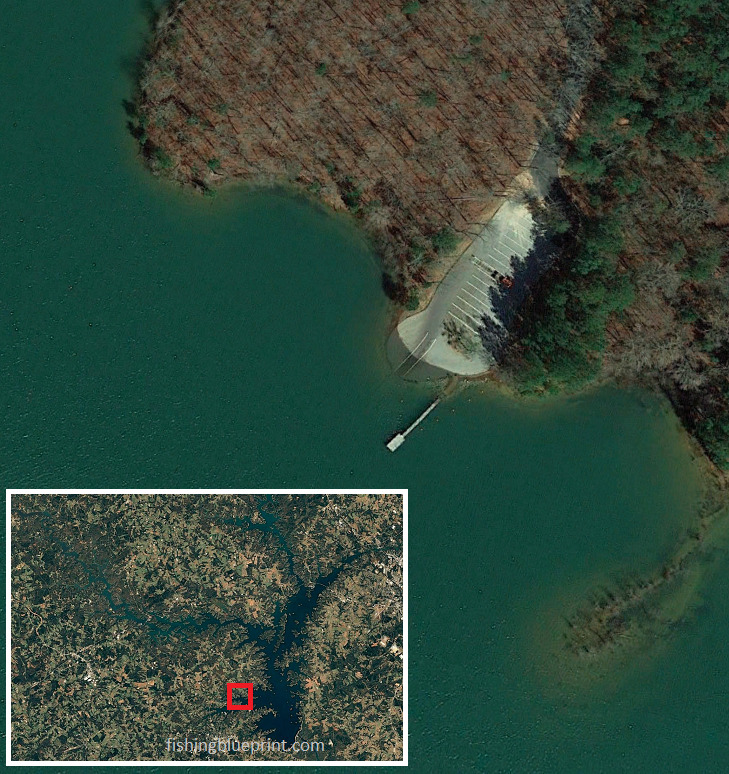
New Prospect Day Use and Boat Ramp
Phone number: (706) 856-0300
Boat Ramp: Yes
Amenities: Dock (ADA), Parking, Bank Fishing
Google directions link
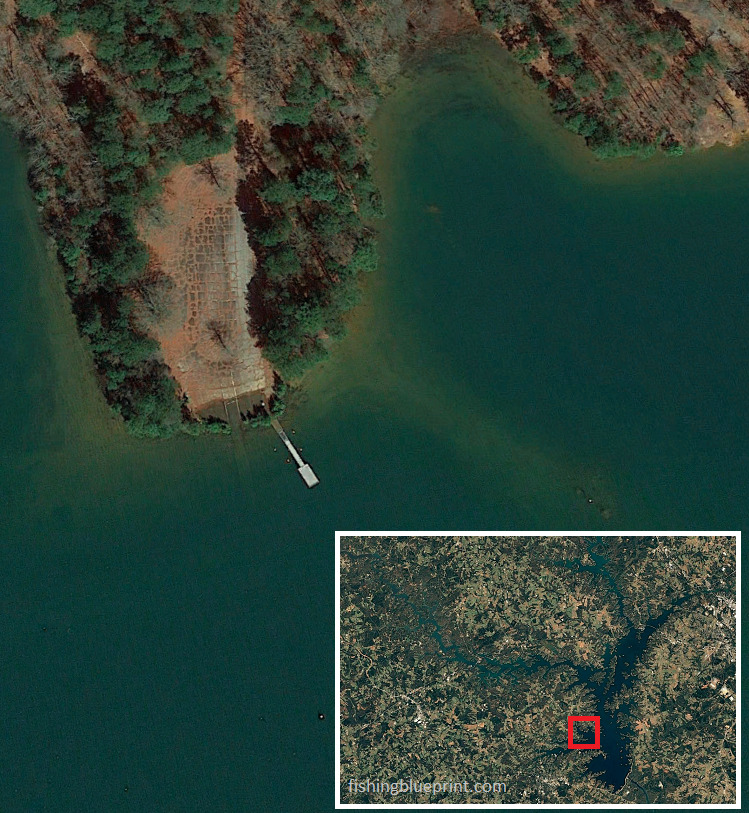
Milltown Campground and Boat Ramp
Phone number: (706) 856-0300
Boat Ramp: Yes
Amenities: Dock (ADA), Parking, Bank Fishing
Google directions link
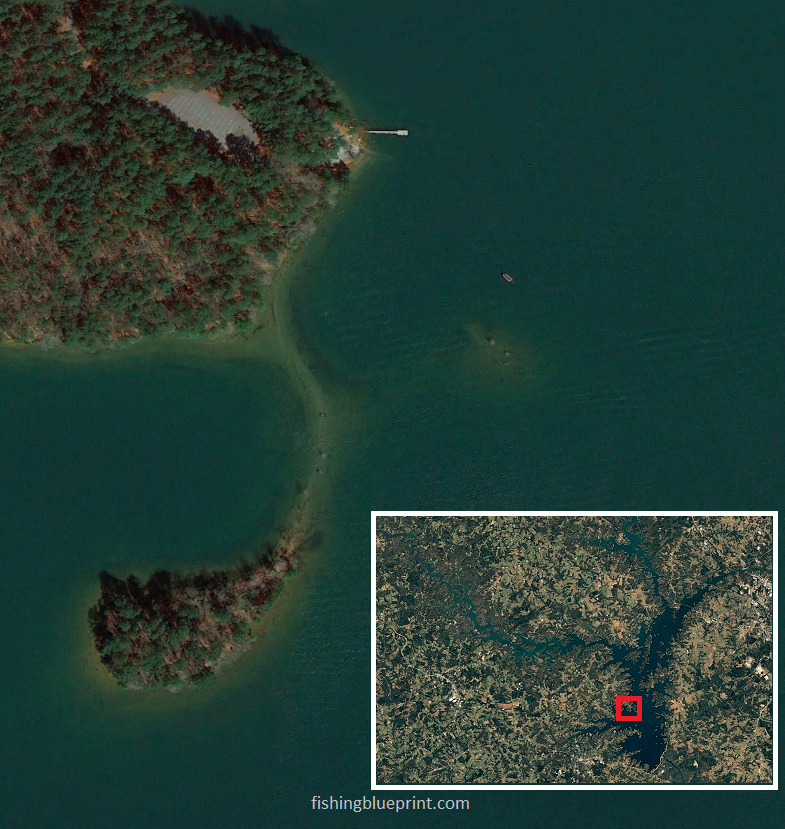
Carters Ferry and Boat Ramp
Phone number: (706) 856-0300
Boat Ramp: Yes
Amenities: Dock (ADA), Parking
Google directions link
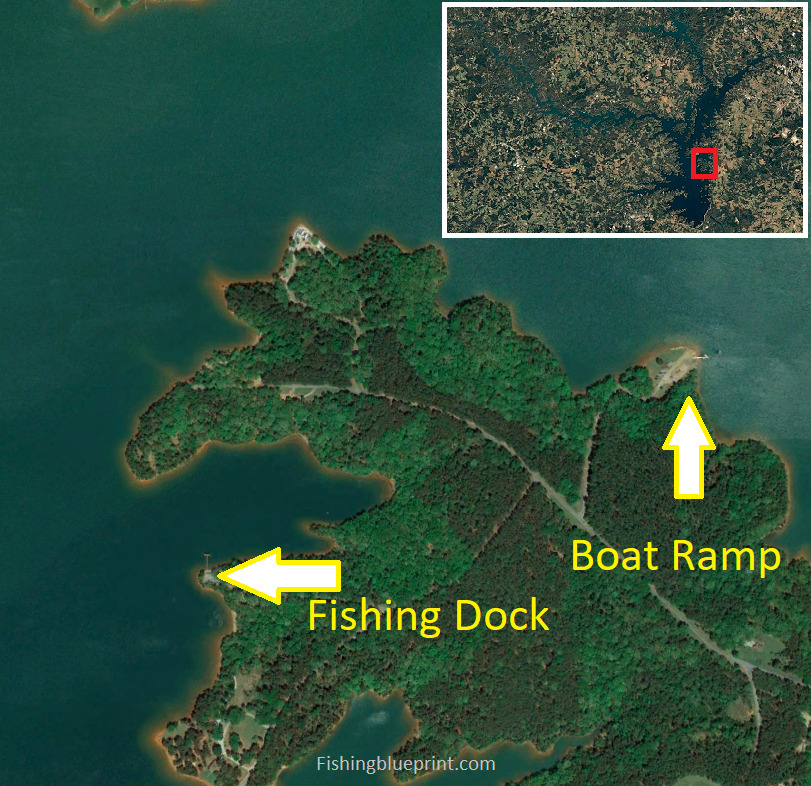
Sadlers Creek State Park Campground and Boat Ramp
State: South Carolina
Phone number: (864) 226-8950
Boat Ramp: Yes
Amenities: Dock (ADA), Restroom (ADA), Campground, Parking (ADA), Fishing Pier, Bank Fishing
Google directions link
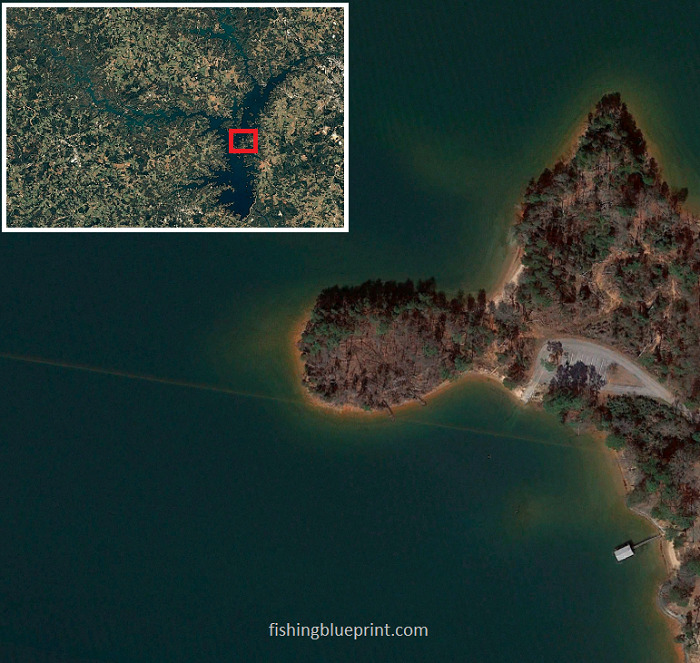
Sadlers Creek State Park Campground and Boat Ramp
State: South Carolina
Phone number: none available
Boat Ramp: Yes
Amenities: Bank Fishing
Google directions link
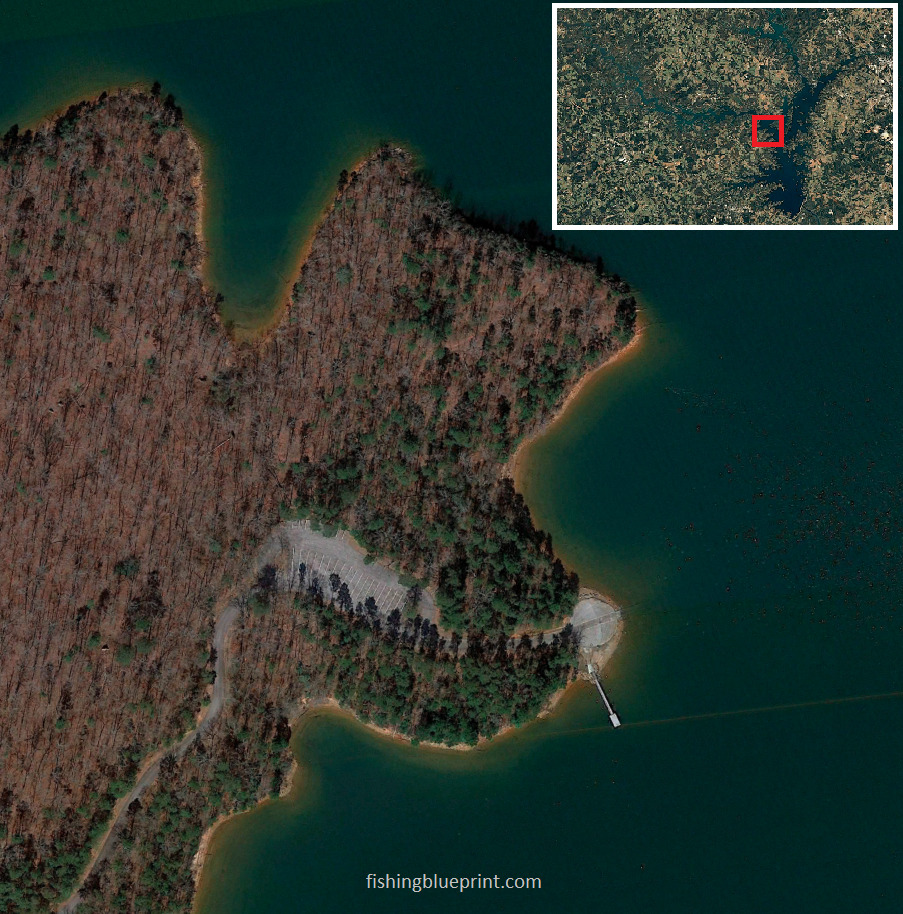
Crawfords Ferry and Boat Ramp
Phone number: (706) 856-0300
Boat Ramp: Yes
Amenities: Dock, Parking, Bank fishing
Google directions link
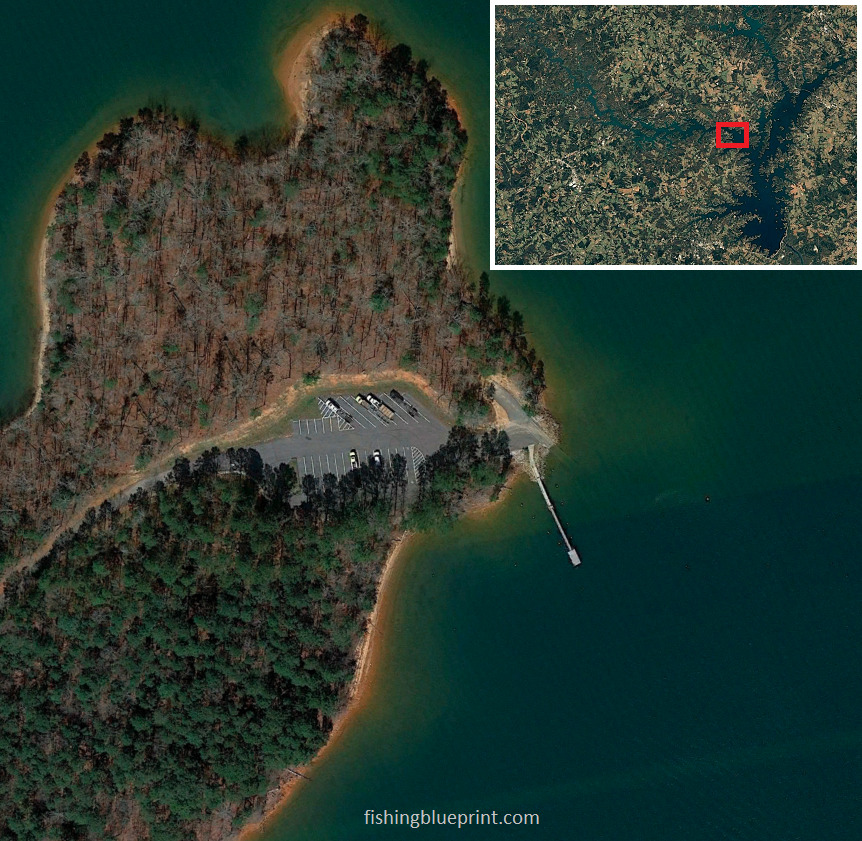
Mary Ann Branch Day Use and Boat Ramp
Phone number: (706) 856-0300
Boat Ramp: Yes
Amenities: Dock, Parking
Google directions link
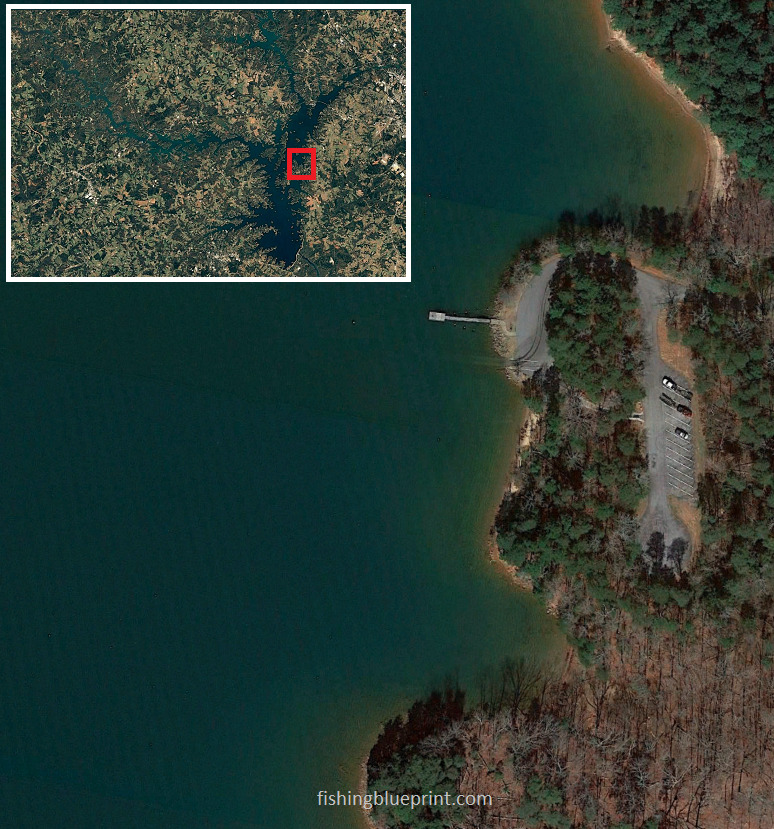
Richland Creek Day Use and Boat Ramp
State: South Carolina
Phone number: none available
Boat Ramp: Yes
Amenities: Dock, Parking
Google directions link

River Forks Recreation Area and Boat Ramp and Boat Ramp
State: South Carolina
Phone number: (888) 893-0678
Boat Ramp: Yes
Amenities: Dock (ADA), Restroom (ADA), Campground, Parking (ADA), Fishing Pier, Bank Fishing
Google directions link
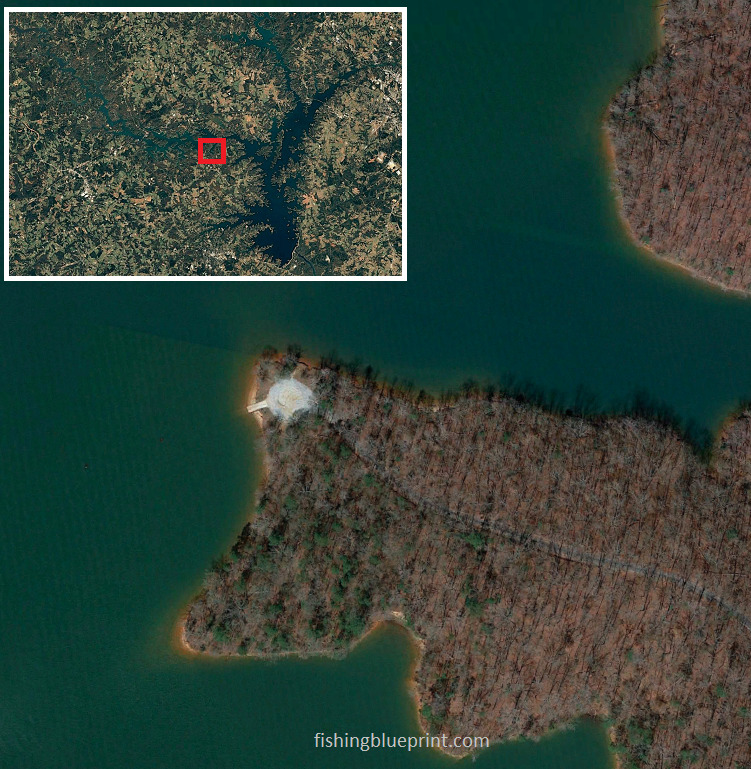
Reed Creek Recreation Area and Boat Ramp
Phone number: (706) 856-0300
Boat Ramp: Yes
Amenities: Parking, Bank Fishing
Google directions link
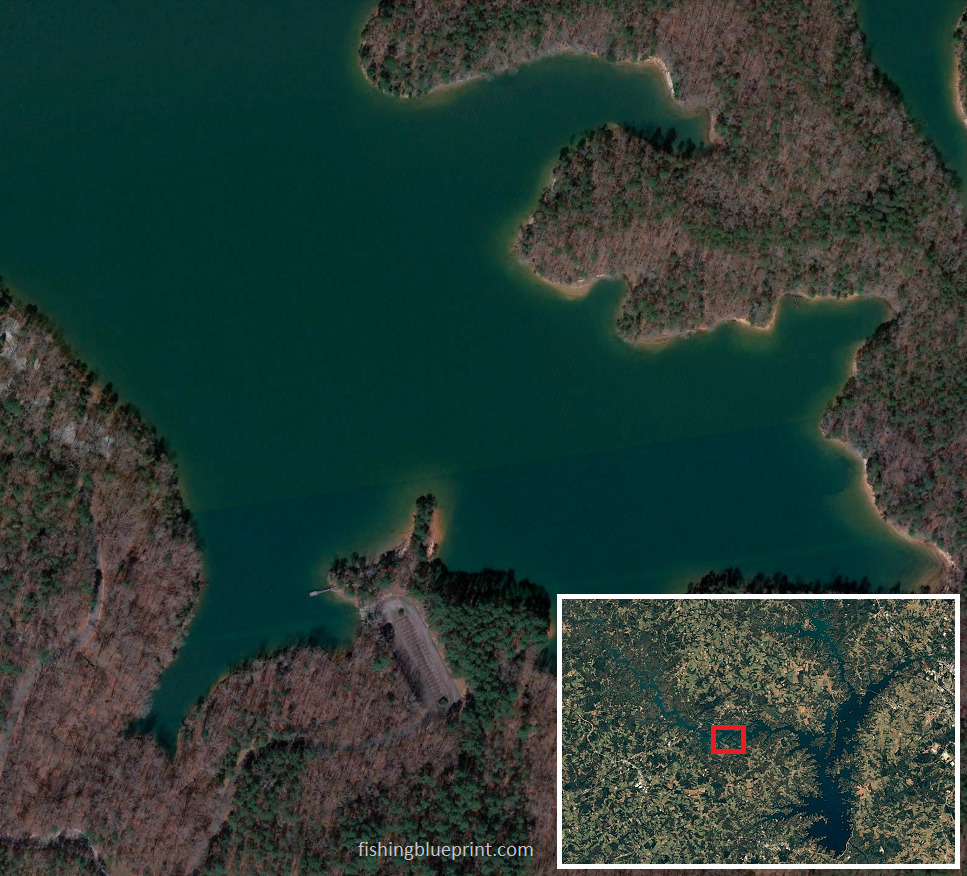
Payne Creek Campground and Boat Ramp
Phone number: (706) 356-2020
Boat Ramp: Yes
Amenities: Dock, Parking, Bank Fishing
Google directions link

Rock Creek Recreation Area and Boat Ramp
Phone number: (706) 356-2020
Boat Ramp: Yes
Amenities: Dock, Parking, Bank Fishing
Google directions link
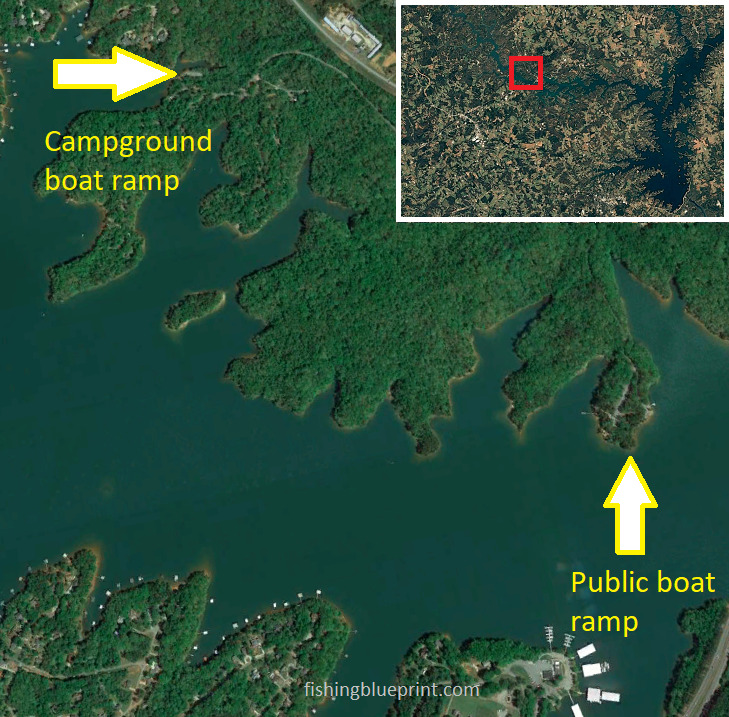
Lake Hartwell State Park, Campground, and Boat Ramp
State: Georgia
Phone number: (888) 893-0678
Boat Ramp: Yes x 2
Amenities: Docks (ADA), Restrooms (ADA), Campground, Parking (ADA), Fishing Pier, Bank Fishing
Google directions link
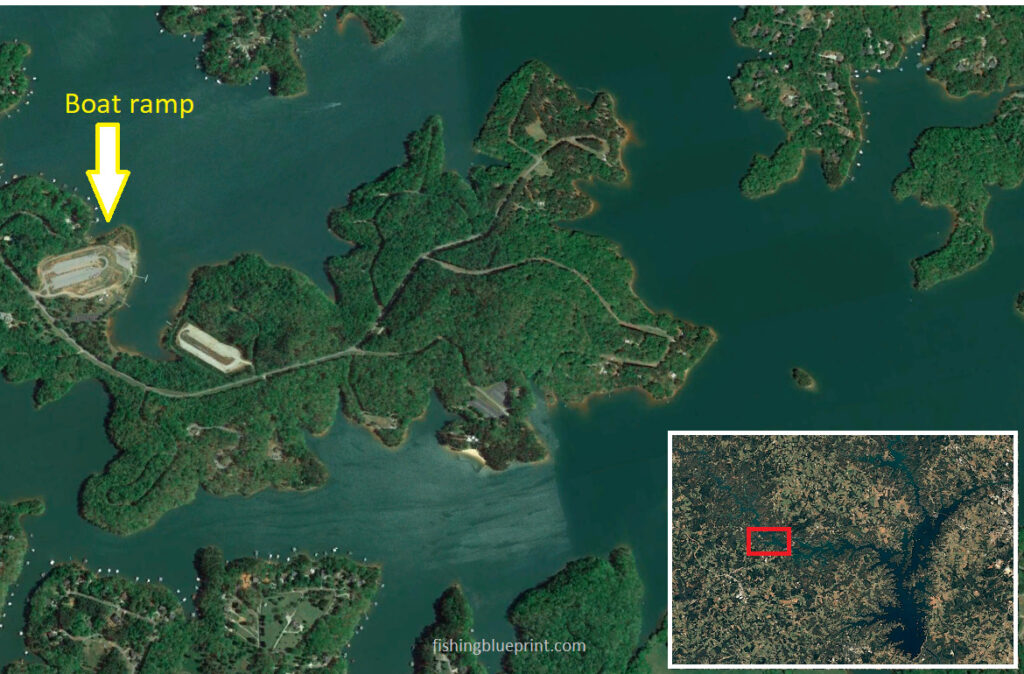
Tugalo State Park, Campground, and Boat Ramp
Phone number: (706) 356-4362
Boat Ramp: Yes
Amenities: Dock (ADA), Restroom (ADA), Parking (ADA), Picnic Area, Bank Fishing
Google directions link
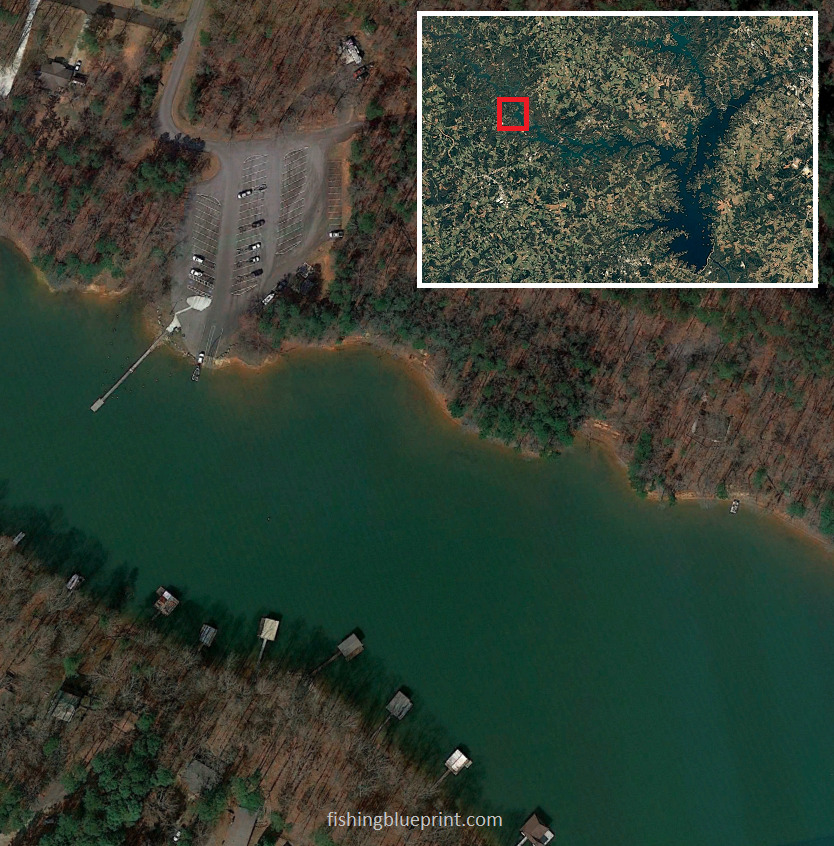
Poplar Springs Boat Ramp
Phone number: (706) 856-0300
Boat Ramp: Yes
Amenities: Parking
Google directions link
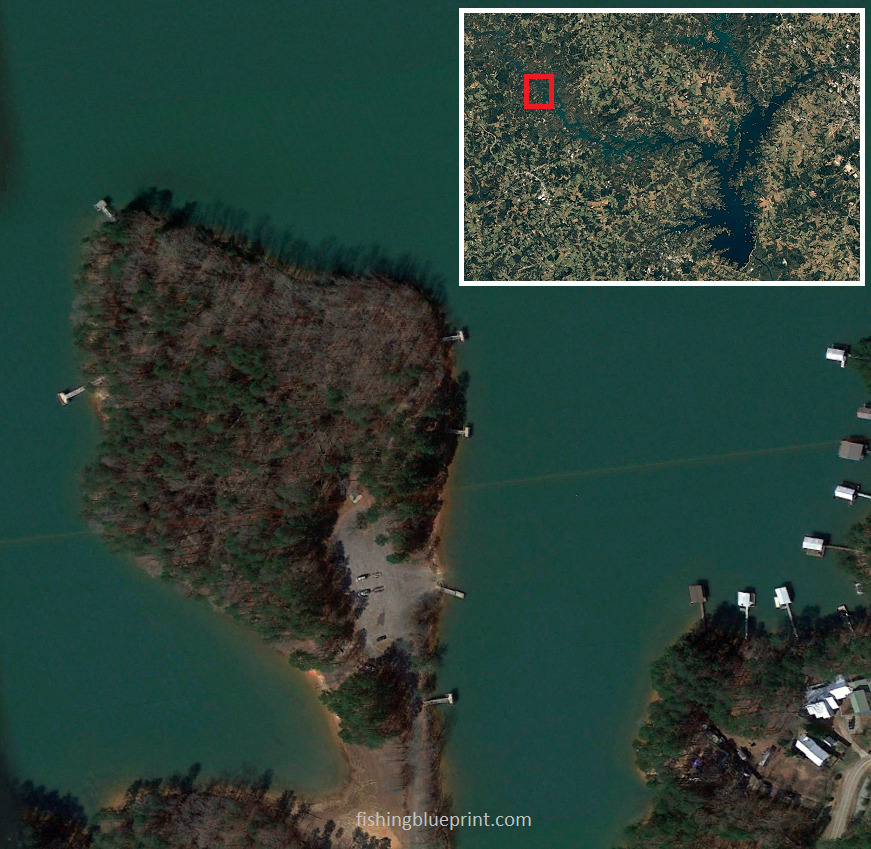
Bruce Creek Boat Ramp
Phone number: (706) 886-5101
Boat Ramp: Yes
Amenities: Dock (ADA), Restroom (ADA), Parking (ADA), Picnic Area, Bank Fishing, Pier Fishing
Google directions link
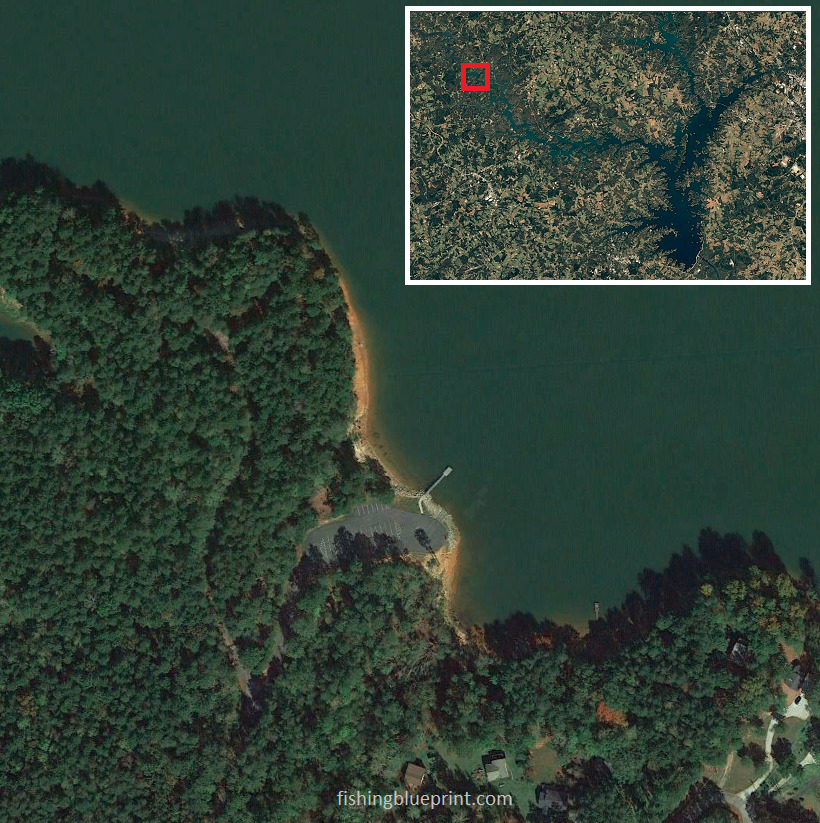
Jenkins Ferry
Phone number: (706) 856-0300
Boat Ramp: Yes
Amenities: Dock (ADA), Parking, Bank Fishing
Google directions link

Spring Branch Boat Ramp
Phone number: (706) 856-0300
Boat Ramp: Yes
Amenities: Dock (ADA), Parking, Bank Fishing
Google directions link
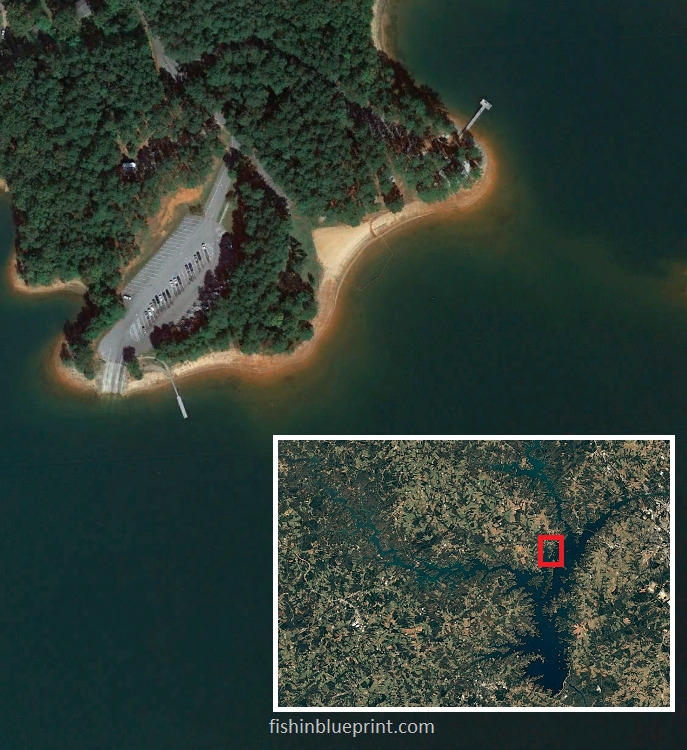
Broyles Recreation Area and Boat Ramp
State: South Carolina
Phone number: (888) 893-0678
Boat Ramp: Yes
Amenities: Dock (ADA), Restroom (ADA), Campground, Parking (ADA), Fishing Pier, Bank Fishing
Google directions link
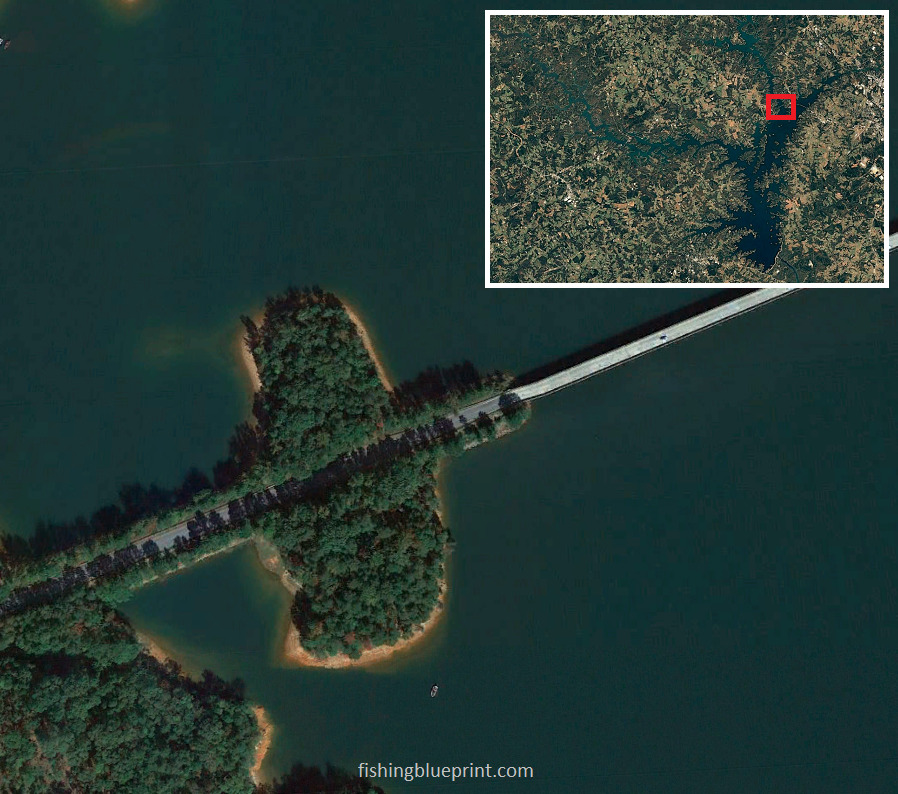
Hartwell Picnic Fishing Area
State: South Carolina
Phone number: (706) 856-0300
Boat Ramp: No
Amenities: Parking, Bank Fishing
Google directions link
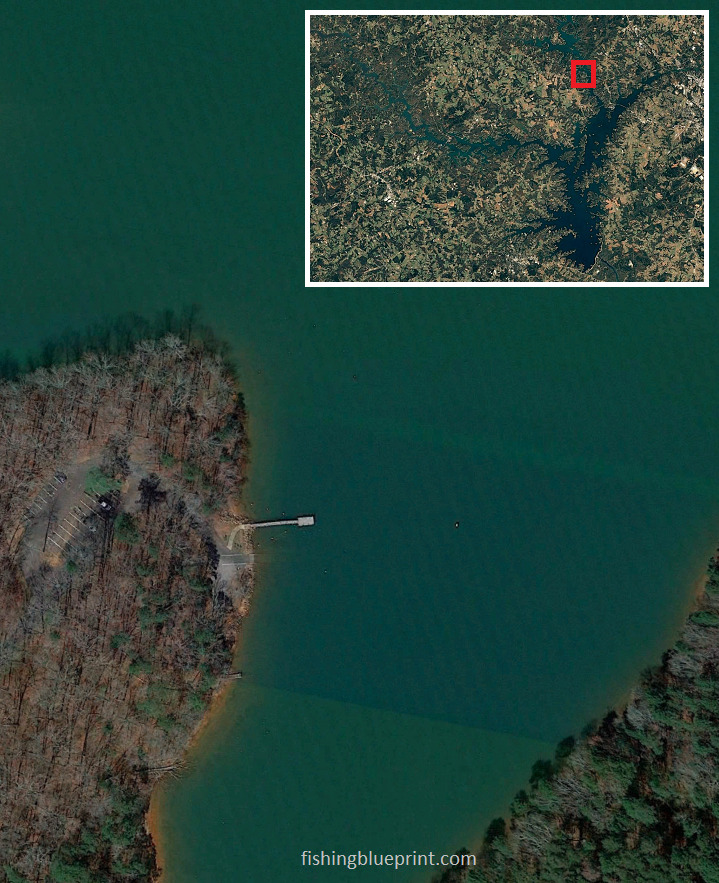
Camp Creek Boat Ramp
State: South Carolina
Phone number: n/a
Boat Ramp: Yes
Amenities: Parking, Dock, Bank Fishing
Google directions link
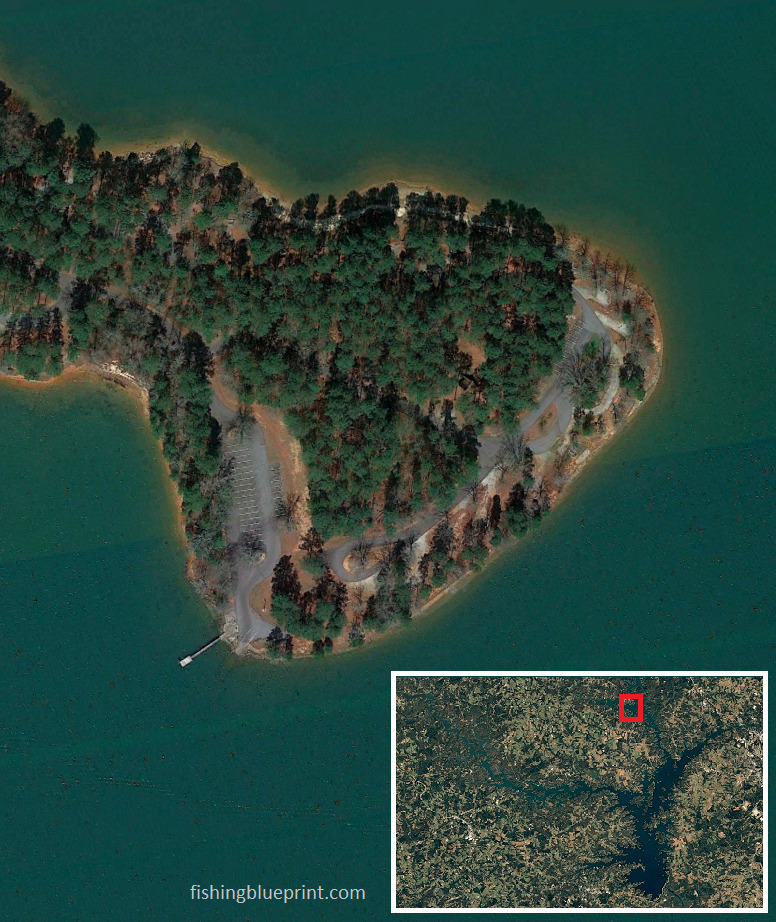
Oconee Point Day Use and Boat Ramp
State: South Carolina
Phone number: n/a
Boat Ramp: Yes
Amenities: Parking, Dock, Restrooms, Picnic Tables, Bank Fishing
Google directions link
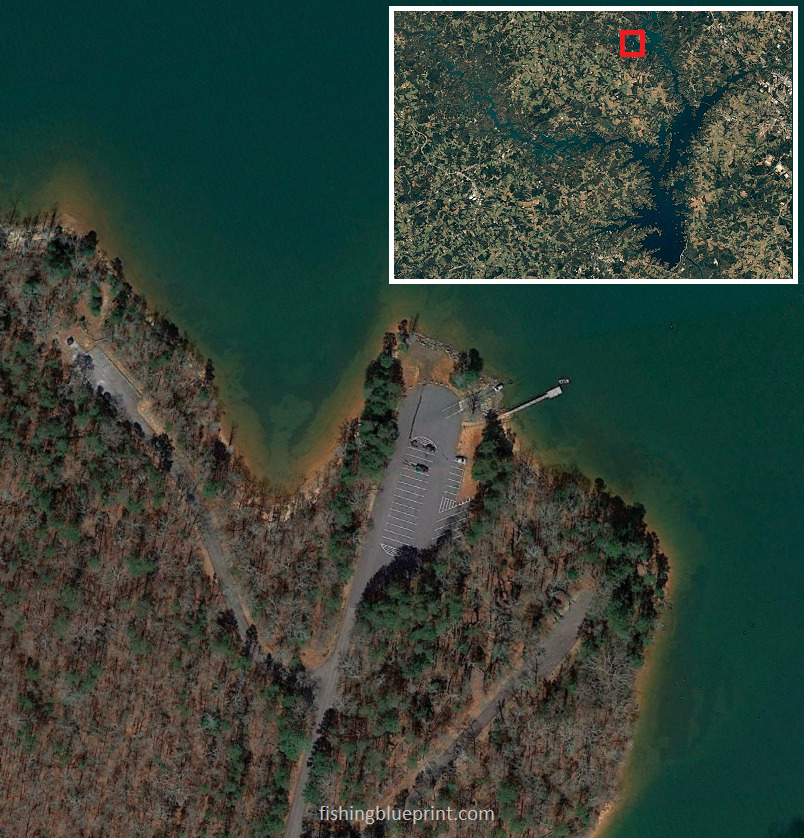
Townville Landing Day Use and Boat Ramp
State: South Carolina
Phone number: n/a
Boat Ramp: Yes
Amenities: Parking, Dock, Restrooms, Picnic Tables, Bank Fishing
Google directions link
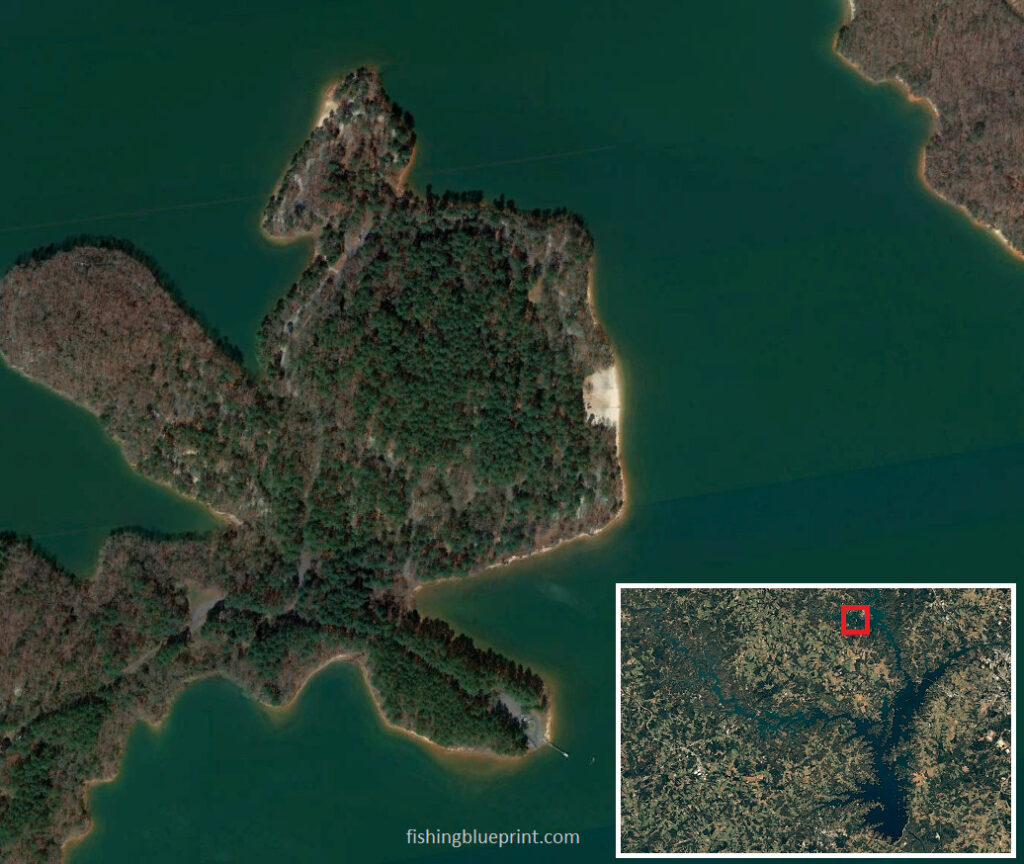
Coneross Campground, Day Use and Boat Ramp
State: South Carolina
Phone number: (888) 893-0678
Boat Ramp: Yes
Amenities: Parking, Dock, Restrooms, Picnic Tables, Bank Fishing, Camping
Google directions link

Friendship Day Use and Boat Ramp
State: South Carolina
Phone number: (888) 893-0678
Boat Ramp: Yes
Amenities: Parking, Dock, Restrooms, Picnic Tables, Bank Fishing, Camping
Google directions link
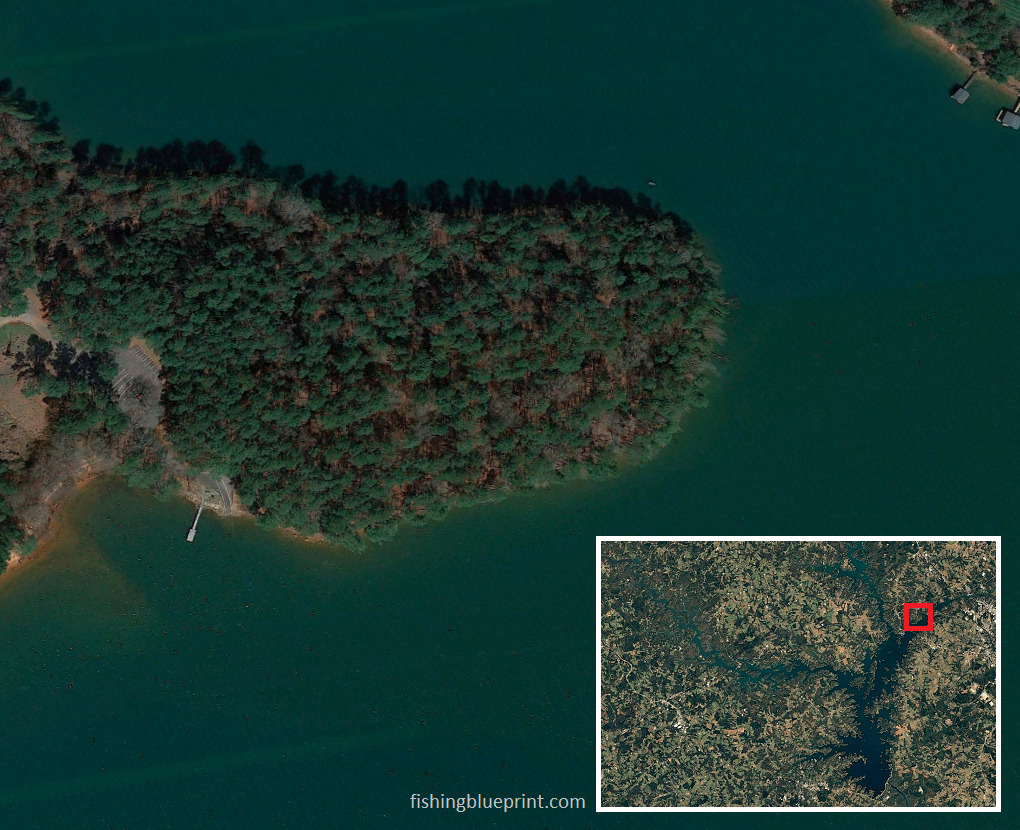
Denver Boat Ramp
State: South Carolina
Phone number: n/a
Boat Ramp: Yes
Amenities: Parking, Bank Fishing
Google directions link
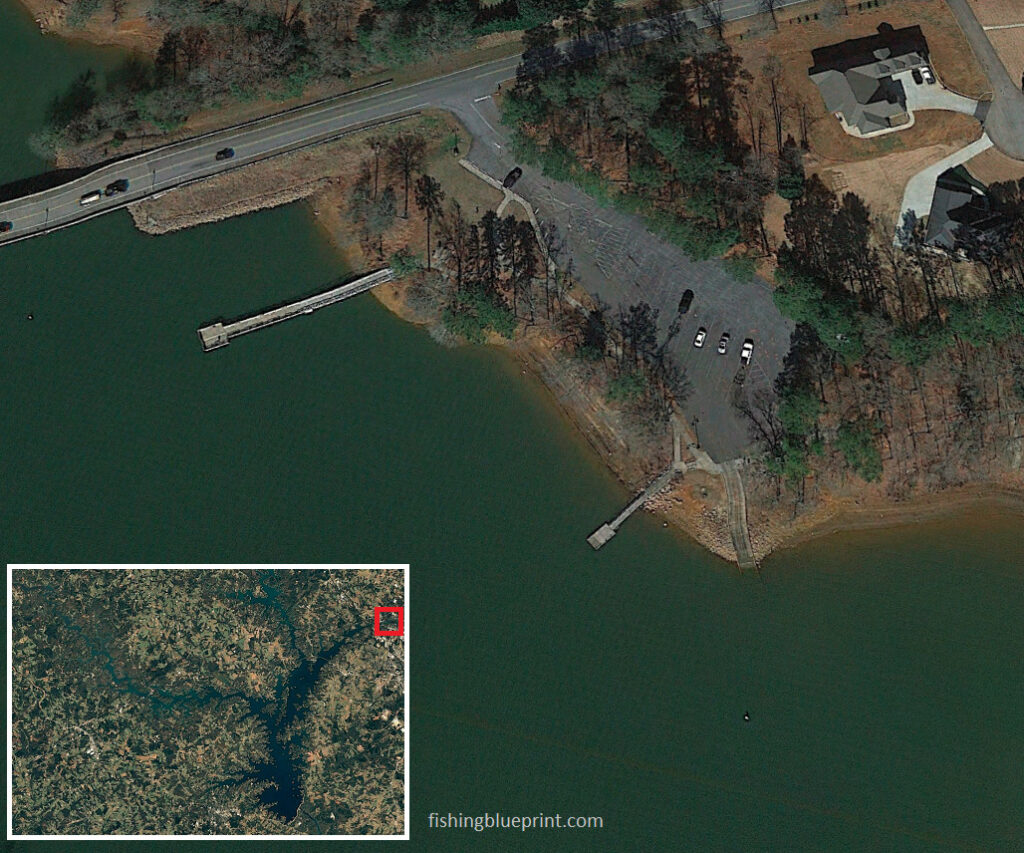
Brown Road Boat Ramp
State: South Carolina
Phone number: n/a
Boat Ramp: Yes
Amenities: Parking, Fishing Pier, Bank Fishing
Google directions link
How To Catch Fish In Lake Hartwell?
Largemouth Bass
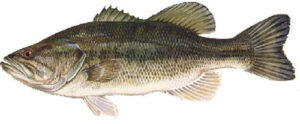 You may be wondering… How do you fish for bass in Lake Hartwell?
You may be wondering… How do you fish for bass in Lake Hartwell?
Largemouth bass is a carnivorous member of the sunfish family.
Georgia grows some MONSTER bass. At any time you could hook into a bass that could be your all-time personal best…
In fact it’s the official fish of Georgia! Cool, right?
In general, if the water clarity is clear to a slightly stained lake. Meaning finesse techniques (like drop shot fishing), small lures (like football jigs), and thin diameter line gets you the most bites when the wind is calm.
On the other hand, if the water is moderately stained or murky, then you need to choose darker lures. This also means you can get away with using thicker diameter line.
We get many questions like, does Georgia have Florida-strain largemouth bass? The answer is complicated. Georgia has some bass that have some Florida-strain genetics. Why? It’s because the Florida-strain largies cannot tolerate the cold water that Georgia can have. So, the scientists have to blend the genetics.
Even if this lake doesn’t have any trout, you can still catch a giant bass by lobbying large swimbaits for glide baits in trout patterns.
Once your arm gets tired you can still catch a ton of fish by throwing a drop shot rig, small crankbait, or dragging a Texas rigged Senko around a fish attracting structure.
If that doesn’t catchem, you can switch to either a drop shot rig or a Neko rig and target points, boulders, or channel swings.
That’s why we wrote this Lake Hartwell Fishing Report for you… so you can get the inside scoop about the top spots and best lures to use to help you out…
If you’re still not sure how to catch a bass, don’t worry. A complete section on Bass Fishing 101 was written to help you out. In that section, you’ll learn about the top ways to get you catching bass fast.
With this in mind, my team and I published a quick-read review of 5 Best Bass Lures Every Angler Must Own, or you can opt to read the complete report, Bass Fishing Lures: A Complete Guide.
Over the past several years my team and I also tested and reviewed a variety of products, including best bass fishing rod, best bass fishing line, best tackle bag and even best fish finder for bank fishermen!
Read more: Beginner’s Guide To Bass Fishing Basics – Tips, Secrets & Things To Avoid
General Largemouth Bass Details
Spawn: Spring, March-May
Food: Shad, minnows, small trout, small salmon, bluegill, perch, crayfish
Georgia State Record: 22 lb, 4 oz. Caught in Montgomery Lake on June 2, 1932.
Table Quality: Decent. Firm white meat.
Angling techniques:
Spotted Bass
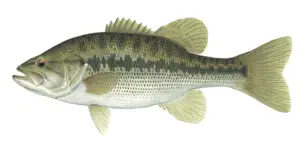 Spotted bass is a cousin to a largemouth bass and shares some similarities and differences.
Spotted bass is a cousin to a largemouth bass and shares some similarities and differences.
Both are extremely hard fighters and very fun to catch.
A spotted bass’ jaw does not reach over its eye line. The jaw of a largemouth bass is longer and extends over the eye line.
On a spotted bass, the dorsal fin is clearly attached and has a mild slope. The dorsal fin of a largemouth bass is separate, or nearly so. This is most likely the most important difference between the two species.
A connected irregular dark lateral line runs along the side of a Spotted Bass. There is no discernible lateral line in largemouth bass.
Drop shot, tubes, Ned rig, Neko rig, and Mojo rig (which is a modified split shot rig that won’t damage your line) around fallen trees or rock piles. Senko’s along with peanut butter and jelly colored jigs are a great color all year round.
General Spotted Bass Details
Spawn: March-May
Food: fish, crustaceans.
Georgia State Record: 8 lb, 2 oz. Caught in Lake Burton on February 23, 2005.
Table Quality: Similar to a largemouth bass it’s firm, white, flaky, mild-tasting
Angling techniques:
- Finesse jigs
- Mojo Rig
- Neko Rig
- Small crankbaits
- Football Jigs
- Soft plastic swimbaits
- Jerkbaits
- Chatterbaits
- Swim jigs
- Hair jigs
- Underspin jigs
- Drop shot plastic worms
- Tubes
- Streamer flies.
- Live baits: minnows, hellgrammites, and crayfish
Striped Bass
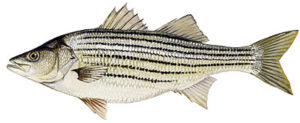 Commonly known as “stripers”, striped bass travel into freshwater streams to reproduce, yet they are saltwater natives.
Commonly known as “stripers”, striped bass travel into freshwater streams to reproduce, yet they are saltwater natives.
Most landlocked striped bass will grow to an average size of 12-20 inches and weigh 1-3 pounds. However, some striped bass can grow to become enormous and can weigh as much as 70+ pounds!
Because their eggs need to move in order to hatch, stripers prefer freshwater rivers and streams as spawning places.
Once a lake or river is dammed off, the area is often inundated by landlocked stripers.
When targeting stripers, focus the majority of your fishing on the deepest water the lake has to offer. Stripers are typically nearby if you can find schools of shad.
It’s strongly recommended you invest in a good fish finder/ sonar unit. Bait fish will appear as a clump of tiny dots suspended in the water column. Additionally, striped bass will appear as larger arcs below or near the school of shad. If you see striped bass near the school of shad you need to fish it.
Stripers may be caught on a variety of baits such as minnow baits, jointed crankbaits, umbrella rigs, or swimming spoons at proper depths when the baitfish are suspended over the deep water.
If you notice any surface feeding action, using topwater baits such as walking baits, or surface prop baits such as whopper ploppers make fishing an absolute blast.
Jigging spoons perform insanely well when the stripers are deep.
Striped bass can often be found in medium to deep water coves and secondary lake arms. One of the first places to find striped bass is to look at your fishing map and find distinct changes in depth such as drop offs or river channel swings.
Striped bass can always be caught using live bait, cut bait (such as frozen anchovy, shad, shrimp, or squid – yep even in lakes), as well as chicken livers.
Lastly, trolling is another great approach to catch stripers. Use larger sizes of flashing lures. Stripers may be caught on a variety of baits such as minnow baits, jointed crankbaits, umbrella rigs, or swimming spoons
General Striped Bass Details
Spawn: April – mid-June in flowing water, current or rivers
Food: Shad, dead or alive.
Georgia State Record: TIE. 63 lb. Kelly A. Ward in Oconee River on May 30, 1967. And Terry McConnell Lake Richard B. Russell April 3, 2009
Table Quality: The meat is excellent. It’s firm, flaky and white. There is a red lateral line that must be removed otherwise it gives off a strong “fishy” taste. Otherwise, these make excellent fish fry meals.
Angling techniques:
- Topwater lures
- Jointed Crankbaits
- Lipless Crankbaits
- Soft plastic swimbaits
- Spinnerbaits
- Jerkbaits
- Chatterbaits
- Swim jigs
- Hair jigs
- Underspin jigs
- Drop shot
- Tubes
- Frozen shad or anchovies as “cut bait”
- Small soft plastic swimbait
- Spoons
- Streamer flies
White and Black Crappie
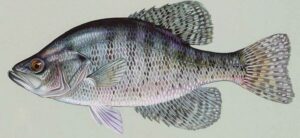 If you like crappie fishing, this lake is filled with them.
If you like crappie fishing, this lake is filled with them.
The best time to fish for crappie in this lake and other lakes similar to it is in summertime while you’re night using a submerged green light. If you don’t know what a green fishing light is, or if you’re unfamiliar, then click this link to learn more.
Green light fishing at night in this lake is amazing. If you haven’t done it you are missing out. The nights are cool and the night sky is filled with stars…
Anyway, I digress…
White crappie tend to linger over submerged brush and timber and are found in schools. The white crappie are much more tolerant in warmer water than their black crappie cousins.
White crappie have a more “silvery” appearance and lack the dark vertical bars when compared to the black crappie.
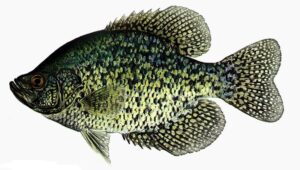 Black crappie can be described as having irregular black dots and blotches on the back and have more of a “silvery-olive” background.
Black crappie can be described as having irregular black dots and blotches on the back and have more of a “silvery-olive” background.
Average weight of a white or black crappie in this lake is probably going to be just under a pound.
General Crappie Details
Spawn: April – mid-June
Food: Larvae, small fish, and crustaceans. Threadfin shad and minnows make up their main diet.
Georgia State Record:
- White crappie: 5 lb. Theresa Kemp in Bibb County pond on April 10, 1984
- Black crappie: TIE. 4 lb, 4 oz. Shirley Lavender in Acree’s Lake on June 1, 1971. And Steve Cheek in Lake Spivey on March 1975 using minnows.
Table Quality: The meat is excellent. It’s firm, flaky and white.
Angling techniques:
- Live minnows under bobbers
- Crappie jigs
- Crappie tubes
- Silver spoons
- Spinners
Catfish
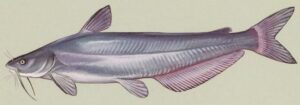 There are four species of catfish in Georgia, the blue catfish, bullhead catfish, channel catfish, white catfish.
There are four species of catfish in Georgia, the blue catfish, bullhead catfish, channel catfish, white catfish.
Catfish are predatory animals and scavengers. Some can get very big, while others remain small. They tend to spend most of their time on the bottom of the lake versus swimming higher in the water column suspended.
Catfish can have up to 8 whisker-like barbels by their mouths to help them detect food.
Blue catfish can get very big. They can weigh more than 100 pounds and grow to around 5 feet long. They have 8 whisker-like barbels by their mouths. They prefer larger cut bait and live bait
Conversely, bullhead catfish tend to be smaller and will weigh on average about 1-2-pounds, but can grow to around 4-5-pounds.
Channel catfish weight will range from 0.5-to-15-pounds in this lake, however the average weight will be between 1-4-pounds.
The smallest of all catfish in North America is the white catfish. These catfish are considered rare by anglers’ standards. They average 1-2 pounds and will grow to only about a foot.
All species prefer warmer coves, but can also be found scavenging near the marinas, or around the dam.
All can be caught with live bait, cut bait or dough bait. Some of the best baits you can use are chicken livers, hotdogs, anchovies, mackerel or sardines, catfish stink-bait/dough baits, or even night crawlers. warm coves or near the dam.
General Catfish Details
Spawn: March-June
Food: Carp, bluegill
Georgia State Record:
Blue catfish – 110 lb, 6 oz. Tim Trone in the Chattahoochee River on October 17, 2020.
Bullhead catfish – 4 lb, 15 oz. Glenn Settles in Ogeechee River on October 12, 2003.
Channel catfish – 44 lb, 12 oz. Bobby M. Smithwick in Altamaha River on May 18, 1972.
Flathead catfish – TIE. 83 lb. Carl Sawyer in Altamaha River on June 22, 2006. And Jim Dieveney in Altamaha River on July 11, 2010.
Table Quality: Soft white meat. In the summer the meat will taste muddy.
Angling techniques:
- chicken liver
- hotdogs
- stink bait
- small live bluegill, sunfish, or perch
- Frozen cut bait; anchovies, mackerel or sardines.
Bluegill or Sunfish
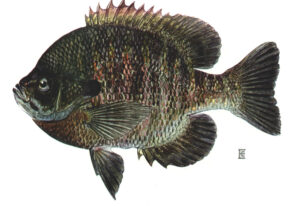 Also known collectively as “panfish” or “bream”, these small fish are both predators and prey. They fulfill a mid-tier predator role in the ecosystem.
Also known collectively as “panfish” or “bream”, these small fish are both predators and prey. They fulfill a mid-tier predator role in the ecosystem.
Panfish are highly aggressive and eat minnows, bass fry (newly hatched baby bass), and insects.
The bluegill has teal-blue coloring on the bottom portion of the chin and gill plate. It also has a solid black opercula flap just behind the gill plate.
Fun fact: The oldest reported age for a bluegill is 10 years.
With the exception of appearance and size, the redear sunfish is quite similar to the bluegill. The dorsal fin of the redear sunfish features tiny vertical bands that go downward. It has a black dorsal color and a yellow-green ventral tint. The male’s operculum has a cherry-red edge, while the female’s has an orange coloring.
These panfish are found on the shoreline and prefer nearby structures. They are incredibly aggressive and will quickly attack anything that looks like it could be eaten. Due to their aggressive behavior, they are one of the easiest fish to catch and are a great way to introduce someone to fishing.
General Bluegill/ Sunfish Details
Spawn: April and May
Food: Small fish and insects
Georgia State Record:
Bluegill – 3 lb, 5 oz. P.F. Gumm in Shamrock Lake on July 3, 1977.
Sunfish (red ear) – 4 lb, 2 oz. Pat Lawrence in Richmond County pond on June 6, 1995
Table Quality: Firm, white meat
Angling techniques:
- Worms
- Dough balls
- Slim Jim sausages pieces on a small hook (not lying… it really works)
- Small spinners
- Trout flies
Walleye
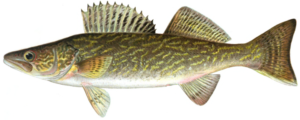 The average size of a walleye in Georgia will be 1-3-pounds. Some can grow up to 12-pounds and live to nearly 30-years old!
The average size of a walleye in Georgia will be 1-3-pounds. Some can grow up to 12-pounds and live to nearly 30-years old!
Walleyes have huge eyes which are sensitive to light, so they are usually located near the lake’s bottom, deep channels, and ledges.
These are tasty predators and during the spring spawn they can be found in shallow water, warmer water.
For walleye deep diving crankbaits and inline spinners that imitate baitfish species are a tried and true method.
If you find deep, rocky sections and baitfish nearby, jigging a large spoon will occasionally catch fish as well.
Night fishing for walleyes gives you the best chance to catch one due to their general sensitivity to light.
Make sure to add glass beads above your spinner to make sound, as well as to tip the tip with a juicy nightcrawler with some bait scent for added attraction.
Finally, switch it up to a rattling crankbait if you’re not getting any bites.
General Crappie Details
Spawn: March-May
Food: Baitfish, crayfish, and worms. Threadfin shad make up their main diet.
Georgia State Record: 14 lb, 2 oz. 31 in. Wes Carlton in Lake Rabun on February 19, 2016.
Table Quality: The meat is excellent. It’s firm, flaky and white.
Angling techniques:
- Because of light-sensitive eyes, walleyes feed more actively early in the morning, late in the evening, or at night.
- Trolling or drifting minnows, nightcrawlers, and spinners
- Jointed minnow plugs (silver-black rapalas).
Boat Ramps at Lake Hartwell
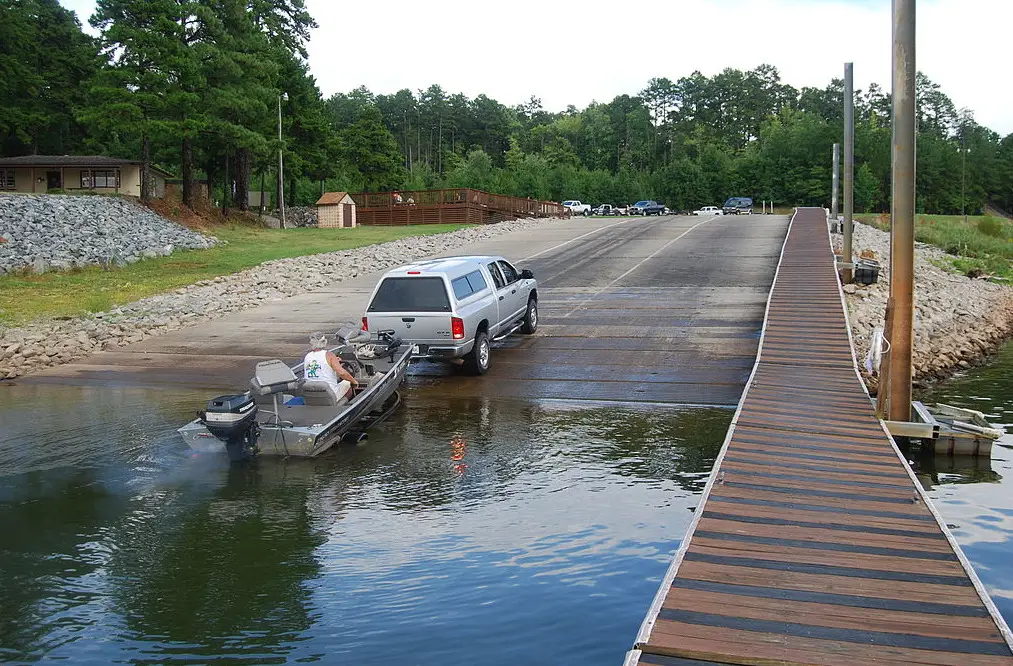
adsfasdfasdfasdfadsfasdfasdfasdfadsfasdfasdfasdfadsfasdfasdfasdfadsfasdfasdfasdfadsfasdfasdfasdfadsfasdfasdfasdf
adsfasdfasdfasdfadsfasdfasdfasdfadsfasdfasdfasdfadsfasdfasdfasdfadsfasdfasdfasdfadsfasdfasdfasdfadsfasdfasdfasdf
Marinas at Lake Hartwell

Hartwell Marina
Address: 149 Hartwell Marina Dr, Hartwell, GA 30643
Telephone number: (706) 376-5441
Open to public or private: Public
Boat launch available lanes: 1
Gas available: No
Restaurant/stores available: Yes, food, water, drinks, and more
Boat rentals available: Yes, pontoons
Restrooms available: Yes
Camping areas nearby: Yes
Fish cleaning station: Not listed
Harbor Light Marina
Address: 1476 Harbor Light Marina Rd, Lavonia, GA 30553
Telephone number: (706) 356-4119
Open to public or private: Public
Boat launch available lanes: 2
Gas available:Yes
Restaurant/stores available: Yes, food, water, drinks, and more
Boat rentals available: Yes, pontoons
Restrooms available: Yes
Camping areas nearby: Yes
Fish cleaning station: Not listed
Tackle Shops Near Lake Hartwell
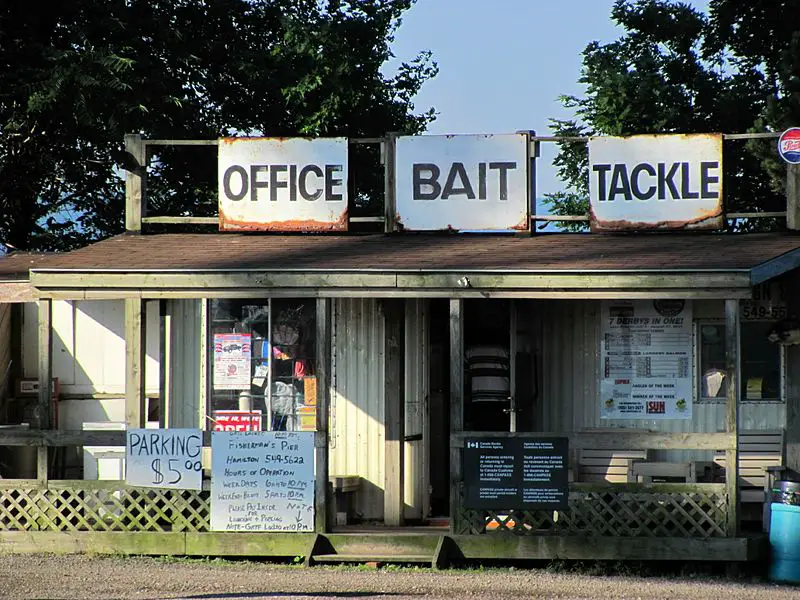
Georgia Side
Dutch Bait
1840 Jenkins Ferry Rd, Martin, GA 30557
(706) 779-6769
McCurley’s Bait & Tackle
17 Liberty Hill Church Rd, Hartwell, GA 30643
(706) 377-2084
South Carolina Side
Academy Sports + Outdoors
3423 Clemson Blvd, Anderson, SC 29621
(864) 261-2400
Lake Hartwell Outdoor Center
5503 SC-24, Anderson, SC 29625
(864) 287-5005
The Bait Shack At Fair Play, LLC
950 Tugaloo Heights Cir, Fair Play, SC 29643
(864) 275-7395
The Outdoor Goods Store
590 JP Stevens Rd, Seneca, SC 29678
(864) 722-5130
Other Activities You Can Do At Lake Hartwell
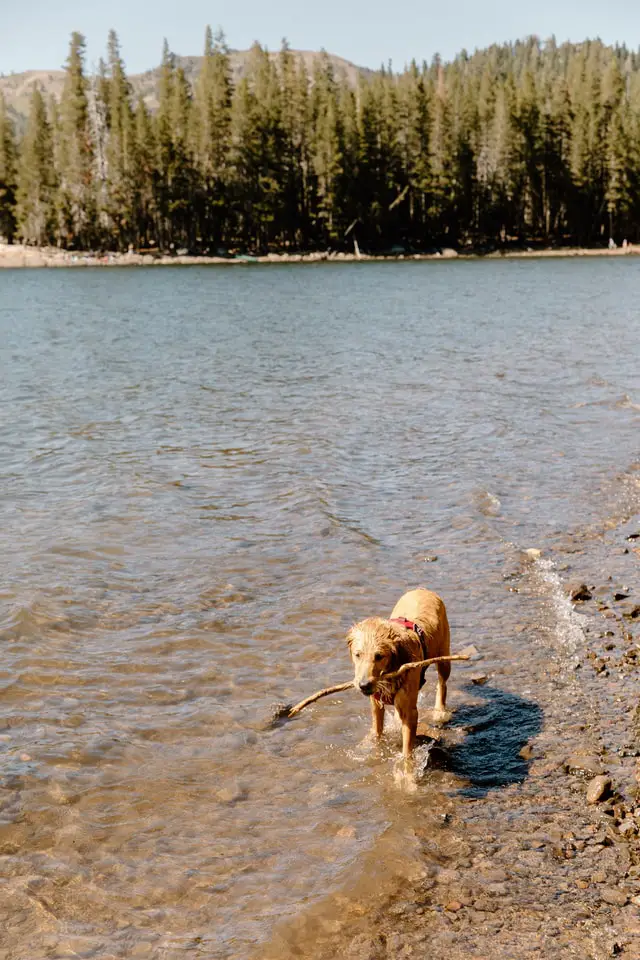
Fishing is not the only thing that brings people to the beautiful body of water. Here’s a list of other things you can do!
- Biking
- Bird watching
- Boating
- Skiing
- Kayaking
- Canoeing
- Sailing
- Swimming
- Camping
- Horseshoes
- Picnicking
- Hiking
- Gentle walking trails
- Nature photography trails
- Wildlife viewing
- Mountain biking
- Stargazing
- and most importantly… relaxing.
In Summary...
As you now can see Lake Hartwell fishing can be tough at times, but it’s not impossible and with the help of the Lake Hartwell Fishing Report… It definitely helps you get started on the right foot quickly and easily, so you can avoid wasting hours wondering where and how to get started.
Did You Get All This?
As fellow fisherman and content creator I thrive on helping others… I feel like I can do the most good by helping others… And frankly… I would feel like I did something wrong if you didn’t walk away feeling a little better about this lake.
I truly want to over deliver for you…
So Let Me Ask You Another Question…
After reading this helpful report:
- Can you see how this could change the way you would fish this lake?… To make it easier, faster… and… with less headache, less frustration?
- If nothing else, do you now have a better sense of where you can get started, even if you have have been here?
- Do you feel that you have a good grasp of what species to expect in this lake?
- Do you have a good understanding what baits are needed to catch each of the different species of fish?
- Earlier we came up with some helpful spots to catch more fish, can you see yourself considering any one of those spots? Which ones are you the most excited about implementing when you get to the lake?
- Is it fair to say that using these spots would give you a significant advantage over someone else who’s fishing this lake?
I Need To Ask A Favor From You And It’s Not Going To Cost You A Single Dime…
If you have gotten anything out of this free report; whether its knowing where to get started, what kinds of fish are in this lake, what baits to use, where to launch your boat, where to buy a frosty beverage, where to camp, and other things to do when you’re at this lake…
Then I need you to do something that is going to help you your fellow angler…
And that is share this report. Please share it to as many people as you can. It’s free to you and it really helps me out as a creator.
Lastly… thank you for spending your time reading through this report and I hope you have a luck on the water.
THIS IS WHERE YOU CAN HELP ME THE MOST: There’s a lot of information about this subject you have found helpful, and I’m sure you’ll be able to put some of the knowledge bombs to use. But sharing this report helps drive traffic which in turn helps me at absolutely no cost to you. I love creating reports like this for you, and you like reading these types of reports please share this with your friends, family, and fellow anglers.
Click on your favorite social media buttons to share this page now!
Other Georgia Related Fishing Articles
Accessories You’ll Need
Fishing Rod
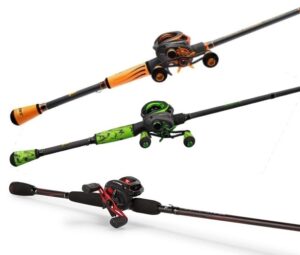 Rod –The popularity of fishing is growing and people are becoming much more conscious of different rods that can help them.
Rod –The popularity of fishing is growing and people are becoming much more conscious of different rods that can help them.
Fishermen want the best technique-specific rod for the money.
Luckily, the report I wrote provides you with detailed information in order for you to make buy the rod for the money, and more importantly which rods to avoid at all costs.
>> What Rods To Use For Bass Fishing? 10 Awesome General Purpose Rods Reviewed
Fishing Reel
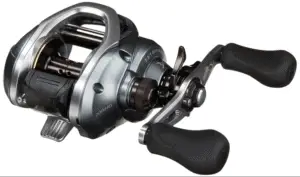
Reel – Having the correct reel to match with your rod is just as important. A good reel should be light and have a buttery smooth drag. There are several great reels on the market, but I recommend the a quality Shimano baitcasting reel. It’s a great reel packed with great features. So much so that it could easily be priced in the mid $200 range.
>>How To Choose A Great Bass Fishing Reel For The Money [and which to avoid at all costs]
Fishing Line
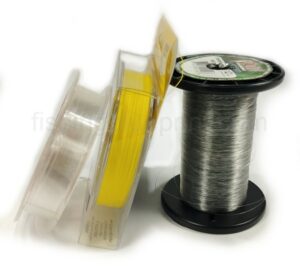
Fishing Line – Having a good line is just as important as having a good rod. I recommend fishing with a good fluorocarbon line. Furthermore, it’s super sensitive because it has little to no stretch, and underwater it’s invisible to the bass! If pride or money is on the line I would use Sunline Sniper FC.
>>21 Tips To Choose The Best Fishing Line
Fishing Lures & Baits

Fishing Lures – It’s pretty hard and darn near impossible trying to catch a fish without using some sort of lure or bait. More importantly these baits you should never forget at home or it could lead to a horrible day on the water
>>5 Bass Fishing Lures You Never Want to Leave At Home
Fish Finder
Finding lunker bass has never been easier when using a fish finding sonar unit. Packed with additional features to make your day on the water even easier. Maps that can plan your day or help you find your way back even in the darkest of nights. Bright bold numbers and letters to make reading the maps easy even in the brightest of days, and colors that pop and make it quick and easy to identify fish.
If you have a boat, kayak, canoe, or float tube, you need a fish finder.
Here’s our choice for the best fish finder between $299-$800:
Humminbird HELIX 7 CHIRP MEGA SI
It has all the features for any serious fisherman whether you’re an avid weekend warrior, or a tournament angler. This has all the bells and whistles you’re looking for.
>> Click HERE to Read The Reviews About Humminbird HELIX 7 CHIRP MEGA SI now
Here’s our choice for the best economic fish finder:
Garmin Stryker
While others look for bites, your fishfinder and GPS plotter help you reach your daily limit. You can mark preferred docks, ramps, and hotspots to easily return to them later and even share waypoints.
Click HERE to Read The Reviews About Garmin Stryker now!
Life Vest
According to Statista, “In the United States, 658 people died as a result of boating accidents and 2,641 people were injured in 2021.”
And it gets even worse… The National Safe Boating Council reported, “Where cause of death was known, 81% of fatal boating accident victims drowned.”
And if that’s not enough the incidence of deaths has climbed dramatically in recent years.
So if you’re on the water you NEED to wear your life vest. Protect you, your friends, and your families lives by wearing a life vest every time you’re on the water.
I recommend the ONYX PFD. It’s comfortable for all day use and there is lots of room for the air to move around so you won’t get sweaty.
>>Click HERE to read all the reviews actual customers!
Sunglasses
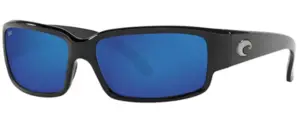 Sunglasses – Do you find yourself fishing in variable light and water conditions? Fishing in open water? Fishing in the bright hot sun? Then, only to leave the lake with eye strain and a splitting headache?
Sunglasses – Do you find yourself fishing in variable light and water conditions? Fishing in open water? Fishing in the bright hot sun? Then, only to leave the lake with eye strain and a splitting headache?
If so, I strongly recommend investing in a pair of Costa Sun Glasses. Thousands of anglers, charter guides, and tournament professionals put their trust into Costa, and so should you. Here’s why…
Costa’s co-injected bio-based nylon frame material is robust and durable, as well as extremely comfortable to wear for all-day use. TR-90 nylon is an excellent material for sports and performance frames since it is heat and cold-resistant.
Costa builds their glasses with class-leading technology. Their 580G glass lens sets them apart from the competition. These lenses are ideal for long days on the lake or sea since you won’t have to worry about scratches on the lens when you wipe the saltwater off. Needless to say they’re Costa’s most durable lenses.
Anyone who spends time outside, especially on the lake, needs polarized lenses. However, not all polarized sunglasses are the same. Costa is 99.9% polarized, giving it the most effective possible in blocking reflecting glare, and minimizing eye strain and headaches.
>>Click HERE to Read The Reviews On These Costa Sunglasses Right Now!
Drift Sock
Simply speaking, a drift sock (also known as a drift anchor) is like a parachute for the water. It gives you the ability to silently troll without spooking the fish!
Anyone who fishes out of a boat, canoe, kayak, stand up paddle board, or any other type of floating vessel should have a drift sock ready to use.
In addition to helping you catch more fish, recreational boaters also like to have 1-2 drift socks handy, just in case their motor goes out on them the drift sock will help slow their drift. This could be instrumental to allow rescuers to find that boat quickly and easily.
I strongly recommend the Drift Master Drift Sock by Mythik Outdoors.
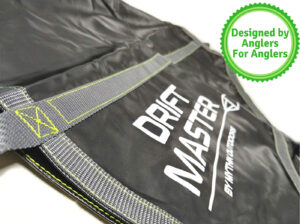 The construction is solid. Holding this in your hands gives you the peace of mind this feels durable and dependable.
The construction is solid. Holding this in your hands gives you the peace of mind this feels durable and dependable.
I love that it’s made from the gorilla-strong “RipStop” high density material, and I like that it’s even paired with the high-density nylon strapping.
It’s 30% stronger than other competitors who use a cheaper version of the RipStop material, so you never have to worry about his ripping.
Looking closely I can see they even triple stitched the high-tension points which is a good feature.
But best part… the Drift Master comes in a complete kit!
So get yours today and don’t leave yourself adrift.
The last thing to note is the Mythik Outdoors Drift Master drift sock kits sell out fast, so make sure you get yours before they’re gone!
>>Click HERE to Read The Reviews On This Drift Sock Today!
Landing Net
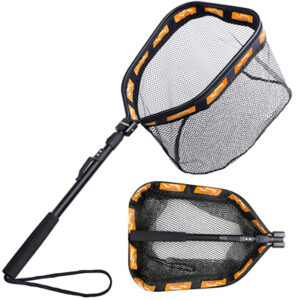 Landing Net – As you are reeling in that monster fish, you don’t want to injure yourself or knock the fish off the hook by trying to grab it.
Landing Net – As you are reeling in that monster fish, you don’t want to injure yourself or knock the fish off the hook by trying to grab it.
The PLUSINNO floating landing net is designed with foam padding on the hoop and provides buoyancy for fishermen. Now, If the net is dropped or blown overboard, the floating design makes it simple to retrieve – so you won’t have to be concerned about losing it! The rubberized net cannot be snagged. It keeps the fish safe for catch-and-release, and the non-absorbent covering avoids waterlogging and odor absorption in the net. It’s collapsing design allows for easy storage.
That’s why I recommend a dependable telescopic landing net.
>>Click HERE to Read The Reviews On This Floating Landing Net Today!
Fishing Weight Scale & Culler
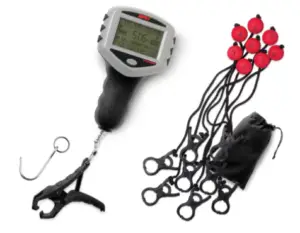 Fishing Weight Scale – Whether you’re going to keep your catch or just take a photo of it and brag to your friends it’s important to have an accurate scale. The Rapala Tournament Model Touch Screen Scale makes weighing and logging your catch easier and more convenient. The large digital scale has a lot of functions and is easy to use. simply keep track of your current catch and its place in your overall weight. To see the weight, just suspend the catch from the heavy-duty composite clamp or the accompanying stainless steel hook. Adding the important details to your catch couldn’t be easier – simply input your catch’s weight and tap on one of the eight storage places. The culling process makes it simple to identify fish that should be released for the greatest overall weight.
Fishing Weight Scale – Whether you’re going to keep your catch or just take a photo of it and brag to your friends it’s important to have an accurate scale. The Rapala Tournament Model Touch Screen Scale makes weighing and logging your catch easier and more convenient. The large digital scale has a lot of functions and is easy to use. simply keep track of your current catch and its place in your overall weight. To see the weight, just suspend the catch from the heavy-duty composite clamp or the accompanying stainless steel hook. Adding the important details to your catch couldn’t be easier – simply input your catch’s weight and tap on one of the eight storage places. The culling process makes it simple to identify fish that should be released for the greatest overall weight.
I recommend a Rapala Tournament Scale that has a large LED display like this one fishing scale here.
>>Click HERE to Read The Reviews on This Tournament-Grade Fishing Scale & Culling System now!
More articles just for you...
Funny Fishing Rules, Laws, and Regulations 2025
Crazy Fishing Laws That Will Blow Your Mind! #7 is INSANE! Strange Fishing Regulations and Laws As silly as hook and rod limits may seem,
EXPOSED! How To Use A Spinnerbait The Right Way for 2025
Are You Wondering How To Use A Spinnerbait? Or How To Work A Spinnerbait Over Grass, Logs, or Points? Well, All These Questions Are Answered
EXPOSED! Best Crankbait Colors for 2025 [Which to Buy & Avoid]
What color crankbait to use? Crankbait Color Chart I just love going into a Bass Pro Shops store and just staring at all the walls
Best Underwater Dock Lights For Fishing – 2025 Buyers Guide
Night Dock Light Fishing For Beginners Dear fellow angler, Does this sound like you? You’re someone who loves fishing but just wants to escape the
15 Best Deep Diving Crankbaits [2025 Buyers Guide – Which to Buy & Avoid]
A Complete Buyer’s Blueprint On The Best Deep Diving Crankbaits for Bass, Walleye, or Striped Bass On The Market Today Fishing deep diving crankbaits can
